#very west european/germanic centred sorry :(
Explore tagged Tumblr posts
Text
Some nations and their birth/death date
- Britannia : born around 800BCE (beginning of British Iron Age); died around 500CE, but she had been getting weaker ever since Rome's forces left.
- Rome : born in 753BCE (Rome's fonding); died in 476CE, for obvious reasons
- Gaul (celtic) : born around 700BCE (between the Halstatt and La Tène cultures); died not long after the Gallic wars in 52BCE
- Germania : born around 750BCE (Nordic Iron Age) died not long after Rome's fall
- Frankish Kingdom/Empire: died in 843 (Treaty of Verdun), son of Germania
- Burgundian Kingdom/State: died in 1482 (end of the Burgundian War of Succession), daughter of Germania
- Frisian Kingdom: died 1523 (end or Frisian Freedom after a failed Frisian rebellion), son of Germania (and is either the biological or the adopted father of the Low Countries (or at least the Netherlands))
- France: born shortly before the Gallic Wars, son of Gaul
- England: born around 500 CE (first Anglo-Saxon kingdoms), he would fully become his "own" in 927 with the Kingdom of England, son of Britannia
- Spain: born somewhere during the Roman era, son of Rome
- Portugal: same as Spain, but earlier, son of Rome
- Netherlands: born shortly before the Roman conquest of Gaul (Belgae), son of idk who yet
- HRE: born in 486CE, when the Franks beat the Soissons Domain; died 1806 for obvious reasons, son of the Frankish Kingdom
- Middle Francia/Lotharingia: born in 843CE (Treaty of Verdun); died either 958CE (division of the Kingdom of Lotharingia) or 1190CE (Lower Lotharingia lost its territorial authority), daughter of the Frankish Kingdom
- Austrasia & Neustria: born in 511CE, died in 751CE, those boys were literally twins and they started the tradition of ✨️fratricide✨️ in the family (later carried on by France killing HRE), sons of the Frankish Kingdom
- Prussia: born 1226CE (creation of the State of the Teutonic Order)/born 1th century CE if we consider him an Old Prussian (Baltic tribe), son of how do I know
- Germany: born...1806(Confederation of the Rhine), 1815(German Confederation), 1866 (North German Confederation) or 1871 (Proclamation of the Reich)
Or he's HRE according to some... I don't know he's complicated...
#feel absolutely free to propose other dates if you don't agree or think there can be another date#very west european/germanic centred sorry :(#i have no idea when Germania's children would be born tho so uh yeah sorry#mes blogs#hetalia#historical hetalia#aph rome#aph germania#aph gaul#aph britannia#aph frankish empire#aph burgundian state#aph frisian kingdom#aph france#aph england#aph spain#aph portugal#aph netherlands#aph hre#aph lotharingia#aph austrasia#aph neustria#aph prussia#aph germany#ill stop here thanks-#hetalia headcanons
65 notes
·
View notes
Text
berlin notes, 1
We were sitting outside a ’bespoke’ coffee house on Schönhauser Allee — Anton Newcombe, the late-middle-aged leader of cultish psychedelic band, Brian Jonestown Massacre, and me — when the music started. It sounded like Marlene Dietrich, singing in German against the background crackle of an old acetate pressing. We both turned to find the source of it and saw two women in their mid-thirties, sitting at a table nearby; on a spare chair between them was a small, leather-veneered suitcase which housed a turntable and speakers. The women were as unlikely as the music: both pale-skinned, in their late twenties maybe, wearing 1930s-style, calf-length, short-sleeved floral frocks, white ankle socks, and wide-brimmed straw hats, they sipped espresso as they shuffled through a dozen or so vinyl 45s in a canvas tote that one of them balanced on her lap.
They paused when they noticed us looking at them. “I’m sorry,” one said. “Are we disturbing you?”.
We shook our heads. Anton managed a small smile. “It gives the place a sort of early Weimar vibe,” he said. They smiled back a little uncertainly, as if they didn’t really get what he meant.
There’s a sort of early Weimar vibe to a lot of what’s going on in Berlin these days.
Twenty-seven years after the wall dividing the east and west of the city was torn down, and the grimmest memories of it turned into fodder for tourists, Germany’s down-at-the-heel capital is transforming itself into a shiny example of Euro-modernity. The city’s bohemian character, formed by two centuries of revolution and transgression, is still strongly evident, but it’s diluted and somewhat more aqueous than it was even half a decade ago. Forests of high cranes have risen across the centre and every major street has been excavated. Other old walls are crumbling too and with every truck-load of bricks and shattered concrete carted away to landfills, a little more of the city’s history is discarded.
It is still a very human place: laid-back, with a reassuring mix of rational, adult forbearance, hedonism, and an inclination to adhere not to the letter of the law but the spirit of it – which is to say it relies on those of us who live here to exercise common sense and consideration. For the most part, the powers-that-be, notably the police, don’t interfere much.
As a very funny TV ad for the city’s U-bahn (or underground rail network) conveys, you can do or be anything you want on the ride, but you have to pay for the ticket.
This tolerance can be risky. Berlin was the first major European city to open its arms to the first waves of Syrian war refugees, but while its welcome of them was heartfelt, the city wasn’t ready, physically or emotionally, for the massive numbers to be processed and cared for, let alone assimilated. Worse, it gave long dormant strains of right wing extremism something to sink their decaying teeth into, and the renewed sense of relevance and confidence within an ugly German minority has coincided with vehement nationalist sentiments overtaking governments in Poland, Hungary and elsewhere in Eastern Europe. Meanwhile, from the northeast, there are daily rumours of Russian troops, tanks and aircraft massing on the borders of southern Ukraine, a country Germany tends to think of as the canary in the coal mine of its current realpolitik; the youth of its capital, Kiev, are enjoying an optimistic, creatively fecund period that, as The Guardian newspaper put it, “evokes late 90s Williamsburg, not the capital of a crisis-wracked country at war”. Looking further back, to 1968, it may be more Prague Spring than Haight-Ashbury’s summer of love.
Berlin, like Vienna to the south, is something of a mittel-European melting pot, in which well-understood, if no longer synced, Euro-US notions of ‘the West’ and a still-fermenting, multi-ethnic identity of a New East are being stirred. Right now there is uneasiness, uncertainty. And neither is assuaged by a recent German government recommendation that every household should stockpile ten days of food, water and essential supplies for an un-specified “attack or emergency”.
Tonight, Anton sent me a direct message via Twitter: no words, just a photo of his Blundstone-booted feet beneath two overloaded shopping trolleys at REWE, our local supermarket. Also attached, a Google map on which he’d marked the fastest route out of the city.
First published in the Griffith Review (online only), Australia, 2015.
2 notes
·
View notes
Text
Makao Bora
New Post has been published on https://wp.me/paK8na-47A
Area Code - Kiambu Town

Kiambu town is a busy and bustling administrative centre in the heart of Kikuyuland.
But, unless you were born there, live there or work there, I guess you know very little about the place. Except may be you have heard the lurid stories of hijacks, killings or buried vehicle spare parts.
It is not a town you would go to unless you have a reason to go to. It isn’t a town you pass through on your way to somewhere else. Not like Thika, on your way to Nyeri or other places to the north and east. Not like Naivasha, on your way to Nakuru or other places to the north and west.
Thika has its Blue Posts Hotel and waterfalls; Naivasha has its many lodges and the lake; Kiambu, I suggest, has no such tourist attractions. Nestling in the cleft of the two main roads, Kiambu leads to nowhere special. (Sorry, Githunguri if I underrate you.)
Well, the other day I did have a reason to go to Kiambu. Someone had recommended this book – Paul Spicer’s The Temptress.
It is yet another re-telling of the White Mischief stories, re-exploring the indulgent Happy Valley lives of European settlers, and re-focusing on the shooting of the aristocratic, wife-seducing, Josslyn Victor Hay, Lord Erroll.
(At ‘Joss’ and his wife’s house parties, it is said, no-one was allowed to leave unless they had slept with someone they hadn’t arrived with.)
And Paul Spicer comes up with yet another candidate for the murderer: Alice, Countess de Janzé, the beautiful, wilful and discarded lover.
At the time of the killing – it was in January 1941 – most suspicion naturally fell on Sir Henry ‘Jock’ Delves Broughton, who had a good reason to be jealous because his wife was having a very public affair with Lord Erroll.
But there were plenty of other husbands who could have held a similar grudge. In fact, Delves Broughton was acquitted by the jury of settlers, many of whom, it can be assumed, felt that the philandering Lord had got what he deserved.
Another book has suggested that it was a political assassination by the British intelligence service, because Lord Erroll was known to have fascist leanings, had been sympathetic to the Nazi regime in Germany – and this was the time of the Second World War, when the British were fighting the Germans.
But, apart from the books, I have another source of information about Lord Erroll. I had the privilege of assisting Sir Michael Blundell in the writing of his autobiography titled A Love Affair with the Sun.
Contrary to the common view that Erroll was a macho rake, Blundell described him as something of a fop. “I remember seeing him at a cattle market,” Blundell told me. “He was wearing a black velvet hat and black velvet knickerbockers. I was struck by how pink his knees were.”
Blundell did acknowledge Erroll’s quick intelligence and organising ability. But he found his lifestyle distasteful, and he deeply resented the Happy Valley image.
“The Erroll set were a minority,” Blundell said. “Most of the settlers were hard-working farmers – and most of us had to struggle through the difficult years of the Depression of the 1930s.”
What then is the connection of all this with Kiambu? Well, Lord Erroll was the MP for the Kiambu constituency at the time of his death.
But that is not it. I discovered that these two settlers, so different in their attitudes and styles, are both buried in the cemetery of St Paul’s Church at Kiambu. So I went to see and take some photographs.
I had a few pleasant surprises. St Paul’s is a cared-for church. The grounds are trimmed and tidy. Inside, at the back of the nave, there are some quite dramatic and powerful paintings of the life of St Paul.
In the gardens there is a picnic site and a ‘Thingira wa Kama’ – a round meeting room in the style of the huts where the Kikuyu elders held their councils.
And the town itself? Yes, it is busy and bustling – but it is also remarkably clean and litter-free. The grounds of the Town Hall are well-kept, too, with extensive lawns and mature trees for shade.
As soon as we stepped inside, Elizabeth Nyambura Kariuki came from her Customer Care office to greet us. “How can I help you?” she asked.
Large-scale road works to the north of Nairobi; a clean and orderly Kiambu; a welcoming civil servant in a town hall – enough to make Lord Erroll and Sir Michael stir in their graves.
Source: Daily Nation
.fb-background-color background: !important; .fb_iframe_widget_fluid_desktop iframe width: 100% !important;
0 notes
Text
Melbourne 2019
I’ve been to Sydney, Brisbane and now off to another popular place down under. Yes, I’ve been to Australia a lot! My latest trip was in Melbourne this time.
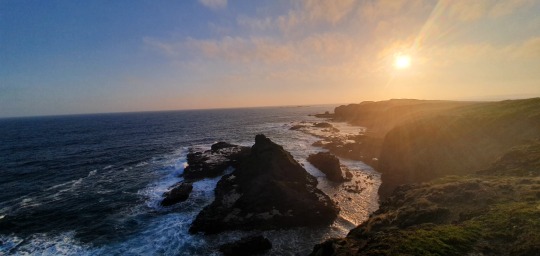
Sorry for the very late blog post. Fourteen days plus two more for a cancelled flight back home is not an easy trip to microblog. The best thing I can do is provide the most concise paragraph and just mesmerize you with the photos.
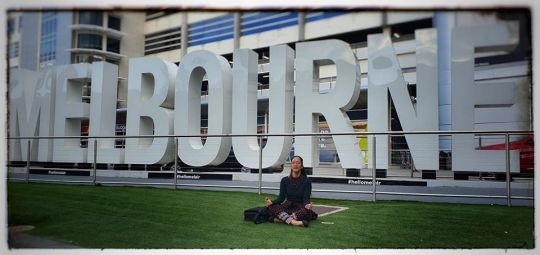
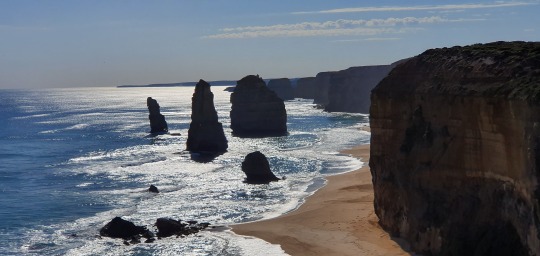
Anyways, here we go!
Tullamarine
Direct flight from Manila to Melbourne via Cebu Pacific (not highly recommended). I arrived in Tullamarine - aka Melbourne Airport (MEL). From there, I met my high school bestfriend Cindy is responsible for my trip.
Skybus
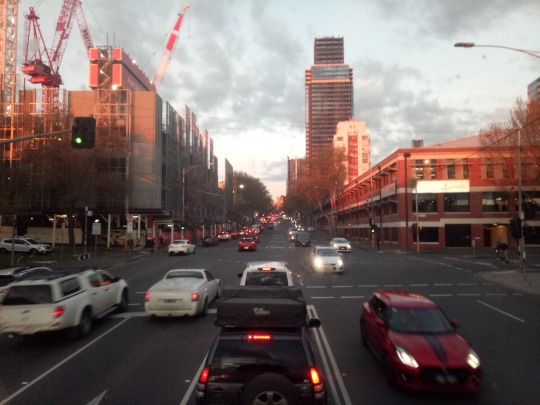
Off to the City Centre. The most convenient way to travel between the airport is by taking the SkyBus Express Airport Transfers. It is a double-decker bus that runs for 24 hours (varying frequencies throughout the day). The journey lasts 30-45 minutes. Riding this will give you a great view of Melbourne.
Travel Essentials
First thing’s first - get your transportation card. If Sydney has the Opal Card and Brisbane has Translink Go Card, Melbourne has Myki. It is your ticket to travel on trains, trams and buses in the City and many parts of regional Victoria. You can easily buy it at a station and top up at a huge range of shops (including all 7-Eleven stores), Myki machines and station ticket offices.
Southern Cross Station
From the airport via Skybus, we arrived at the Southern Cross Station. This is one of Australia’s most popular destinations - all sorts of enticing things you will see - cafes, restaurants, etc. I think it is a melting pot of people coming from every nation, speaking different languages.

It is actually the most preferred station for various distances and directions from the centre of Melbourne is just a straight-forward train ride away from here, providing perfect day trips for the savvy traveller.
MELBOURNE’S COUNTRYSIDE
Bird Feeding - Dandenong Ranges
From the City, down to the countryside - just like any other places in Australia, I started my trip by feeding them birdies. Melbourne also offers a variety of birdwatching niches to explore.
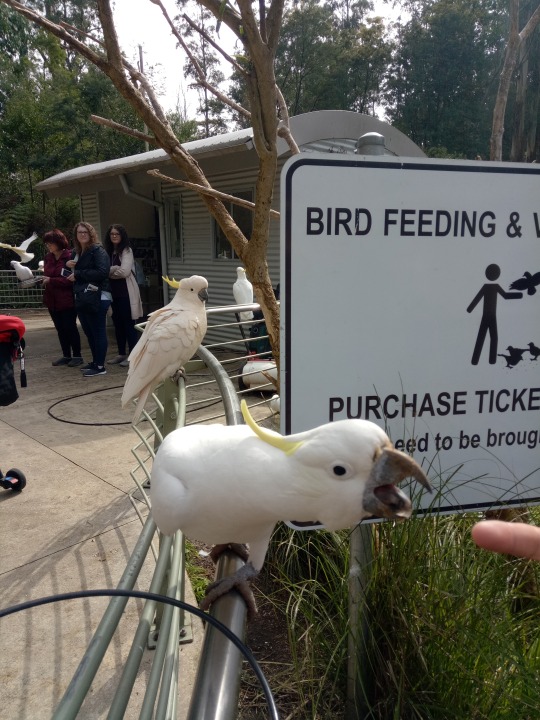
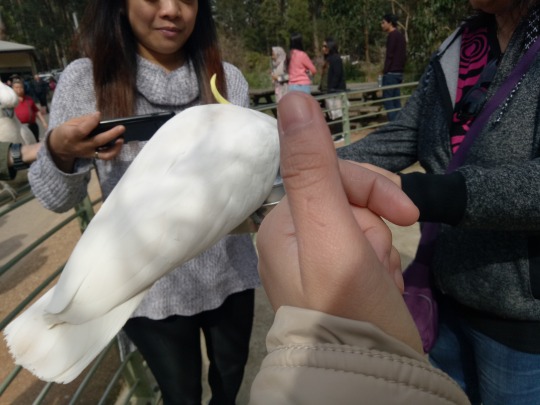
#BirdBite
Tesselaar Tulip Festival
Then off to somewhere I’ve never been before - Tesselaar Tulip Festival. This festival began in 1954. Held over four weeks. It offers various themed days and weekends including Turkish, Dutch, Food, Wine & Jazz and Irish along with eight days packed with school holiday fun.
When all the tulips are in bloom, there are nearly one million tulips on display. There are 130 varieties of tulips at the farm, so you could literally spend hours ogling and taking photos of them and their kaleidoscope of colours.

Orlinda Heritage Walk
Then we passed by the charming village of Olinda found at the highest part in the Dandenong Ranges. It has craft shops, antique stores, boutiques and cafés. It is renowned for its European influence and features a selection of German- and French-style restaurants and enjoy some of the region’s local produce.
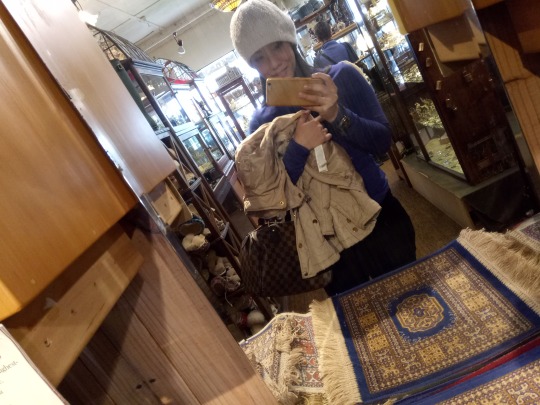
St Paul’s Cathedral
Now off to the City the next day. First off is the St. Paul’s Cathedral. It is located at the opposite of the Federation Square, on Melbourne's busiest intersection.
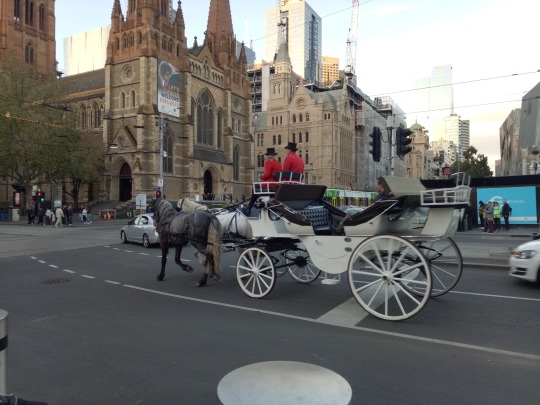
This neo-Gothic St. Paul’s Cathedral is a Melbourne landmark, built between 1880 and 1931. Designed by William Butterfield, the cathedral’s architecture is described as Gothic transitional, combining Early English and Decorative Gothic styles. Highlights include the fine polychromatic brickwork, beautifully patterned floor tiles and mosaics, banded stonework, fine timbered roof and tiled dado walls.
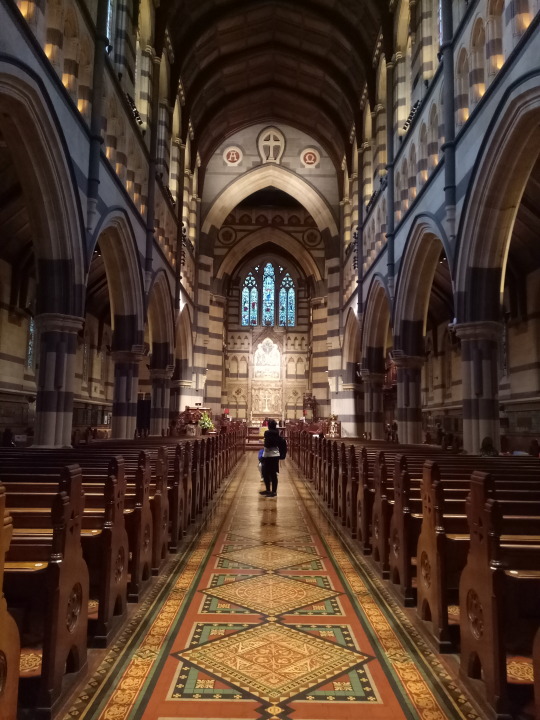
Graffitti
Your city trip will not be complete without going through these alleyways where you will find awesome graffiti. Artists change it every now and then.
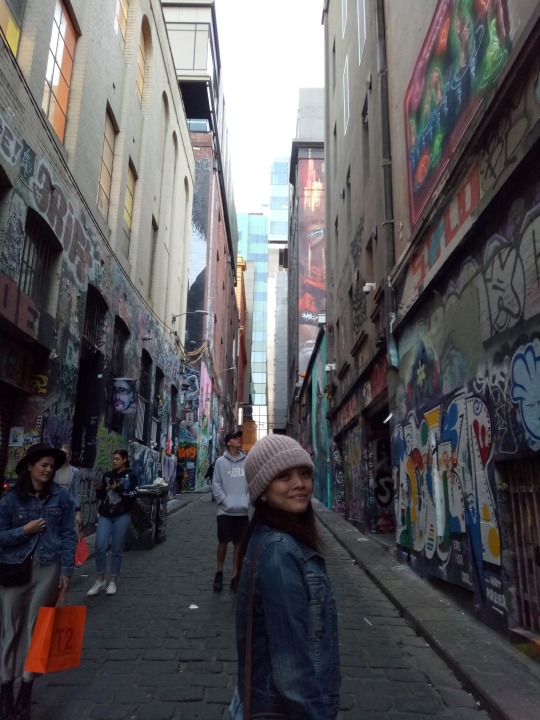
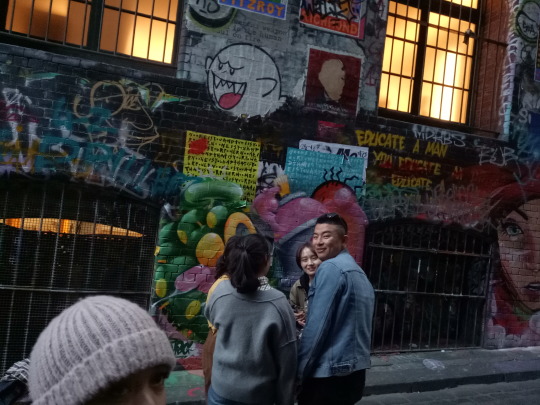
In these alleyways, just say “pssssst!” and they will turn around and look at your camera.. lol!
Footy Weekend
It doesn’t take long to see how much the locals love sport in Australia, especially in Melbourne. They would even consider it as a holiday.
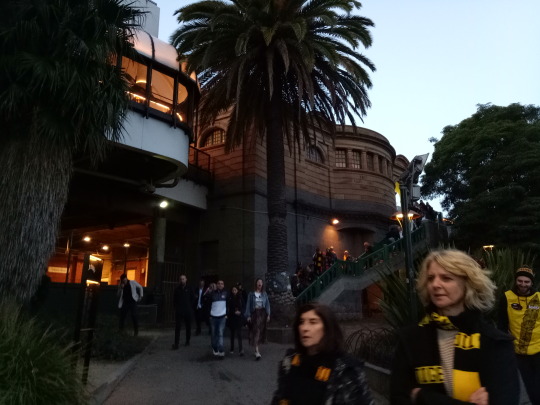
Australians love a huge number of different sports, including cricket, soccer, rugby union, rugby league and basketball, but nothing quite matches their passion for Australian Rules Football. Originating in where else - Melbourne Victoria, it has spread around the country.
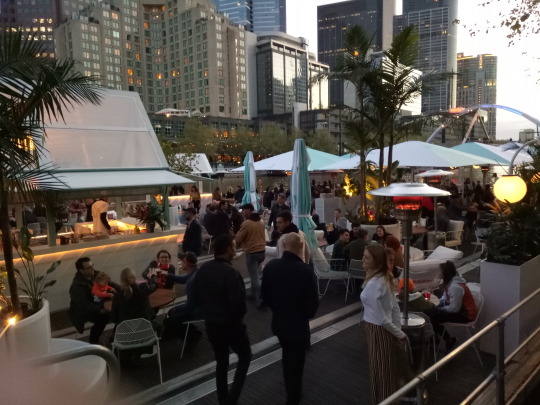
PINOY COMMUNITY
Sunday Church & Community Services
It was nice to be adopted by a Pinoy group for two weeks. They still carries Filipino culture and tradition even if they are in a foreign country.
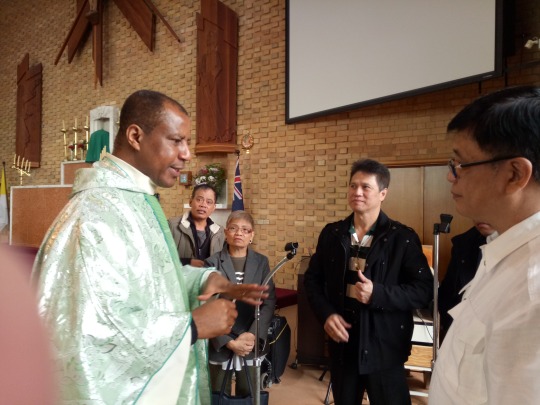
Fratelli
But then we ate at an Italian restaurant :) Your trip will never be complete without a trip to an Italian restaurant here. Melbourne has a big Italian influence.
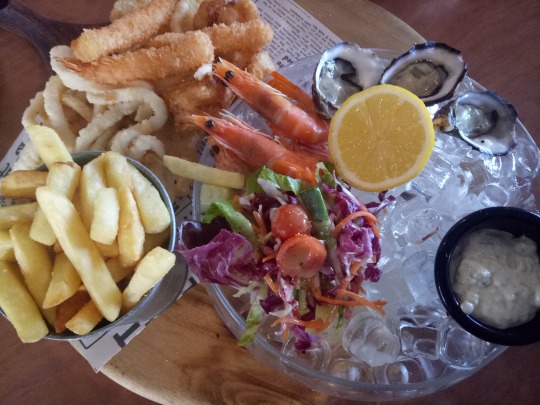
Frankston Pier
Frankston Pier has always been a popular fishing destination along Port Phillip Bay. The pier offers a good range of fishing species for anglers all year round. You just have to deal with the birds and the crows.
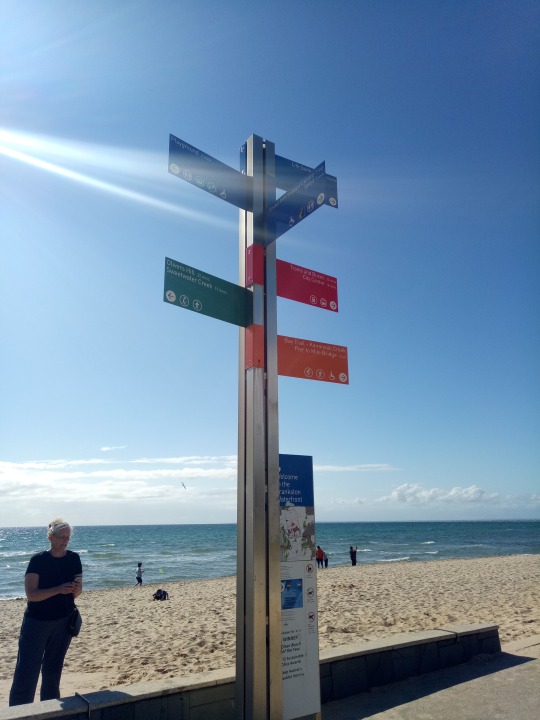
Lexie
Coming from Dubai is another best friend. This trip is sort of a reunion after the last one we had in Dubai. We just like meeting up in different parts of the world. Sleep over in her place is the first agenda :)

Grilld
Back to the city. Just along the Southern Cross station, you will find Grilld. It is a self-proclaimed 'gourmet burger' franchise Grill'd rolled into hipster laneways and streets across the country. If you want a change from the usual KFC, Hungry Jacks or Maccas, Grilld offers hand-crafted burgers made with high quality ingredients and interesting flavour combinations.


Grocery
Before sleeping over at Lexie’s, we did some grocers. Of course my fave Honey Soy Chicken Chips.
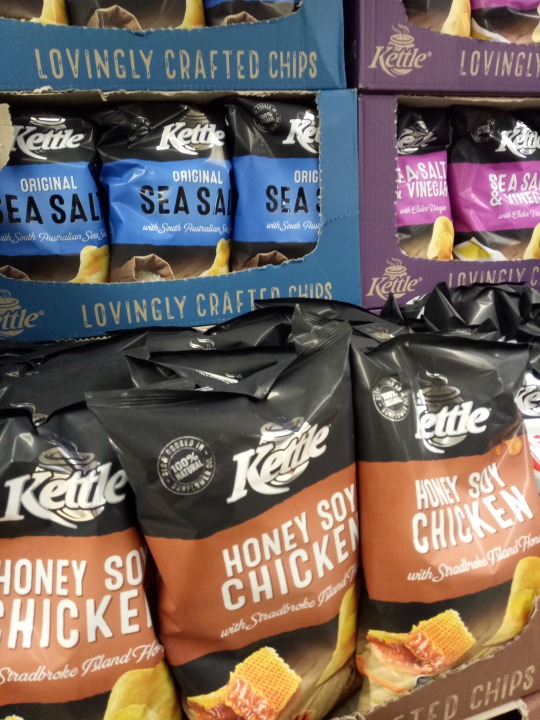
Just Chill Indoors
Taking a break from all the traveling and sightseeing. It is so nice to just have a chill day and have a movie marathon and do some laundry.
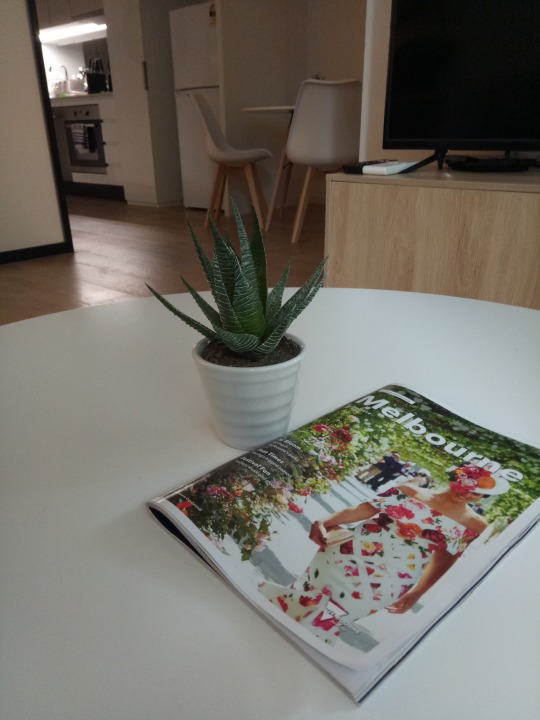
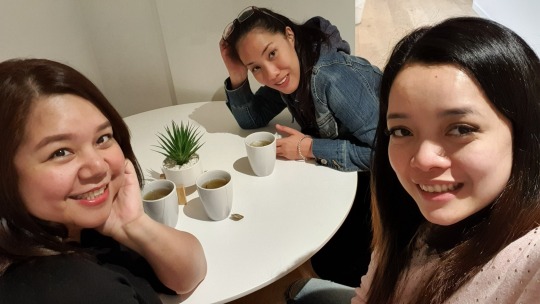
Deakin University
The main reason why we came to Melbourne - to witness my HS bestfriend walk on stage and graduate at Deakin University. Stage bestfriends. It was an experience witnessing a graduation in a foreign country. Best part is the post-ceremony function :)


Great Ocean Road Arch
Off to the Twelve Apostles. Our first stop was the Memorial Arch, which is located just past the city of Torquay. The arch is a symbolic monument as it represents the gateway to the Great Ocean Road. Not only that, but the Memorial Arch also represents a piece of history. It pays homage to the soldiers who survived World War I and built the Great Ocean Road. If you’re an avid history geek, there are actually a handful of plaques on-site which you can read up on.
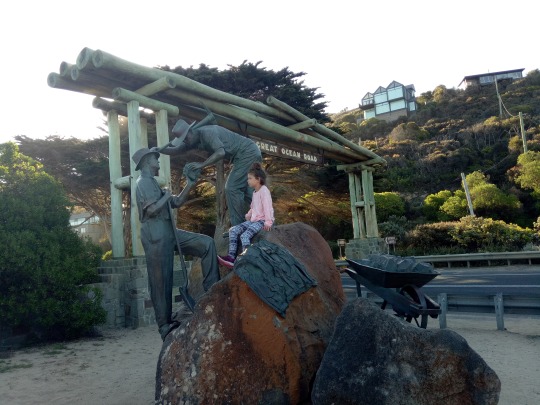
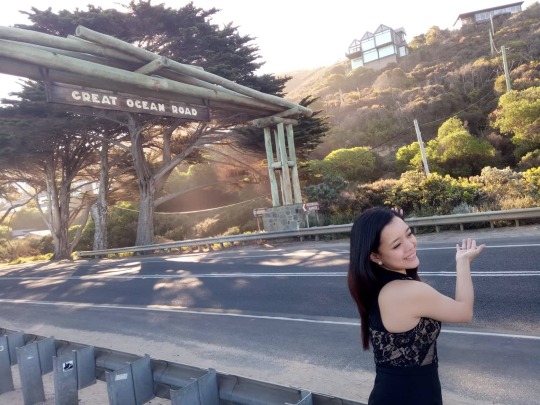
Oorla Lodge Forrest
Because we arrived almost night time, we had to stop over at the Oorla-Lodge Forrest. It is situated at quiet residential street. Surrounding the area are cool waterfalls, lakes, dams and rivers. We just spent the night chilling at the lounge room over a wood fire and did movie marathon.

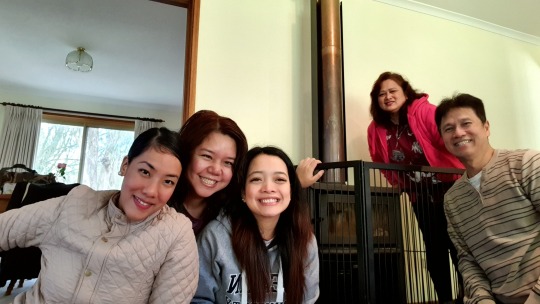
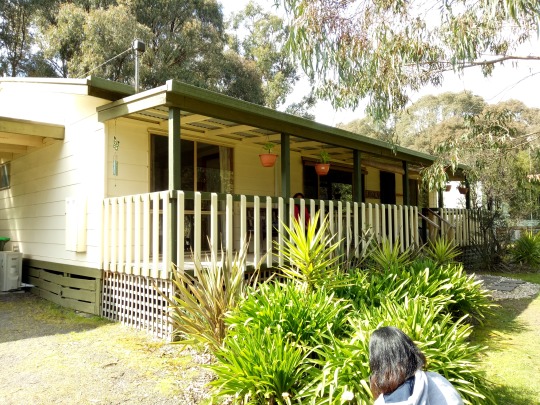
Platypi Chocolate Factory
The next day, in Victoria's Otway region, we visited was the Platypi Chocolate in Forrest. It is located on the township mountain bike and walking trailhead, Platypi Chocolate is a great place to break a trip, finish a walk or ride or start a leisurely day. You can sit amongst the trees and enjoy a hot chocolate that comes with a little theatre; sip a wine or an iced chocolate while listening to the birds sing; look for a real life echidna from the balcony while munching a honeycomb-filled chocolate variety.
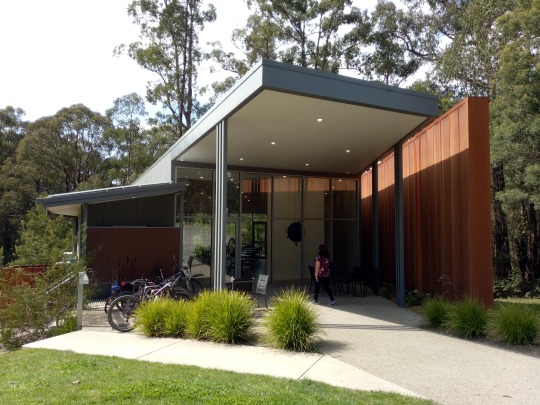
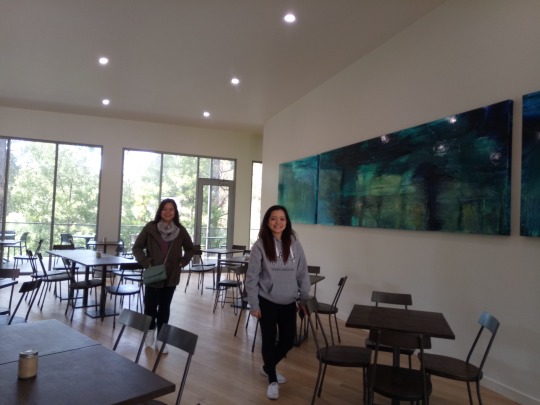
Stevensons Falls Walk
There is a lot of bushwalking you can do in AU and one of them is walking towards Stevenson’s Falls. These falls are located at the end of a gravel road approx 6 kms from Barramunga. The valley has a campground available from the day picnic area. You can have the 500metre walk on a graded trail.
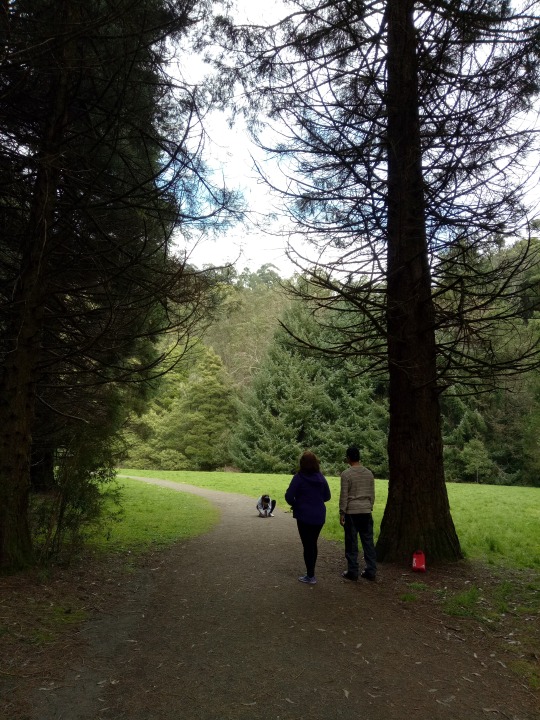
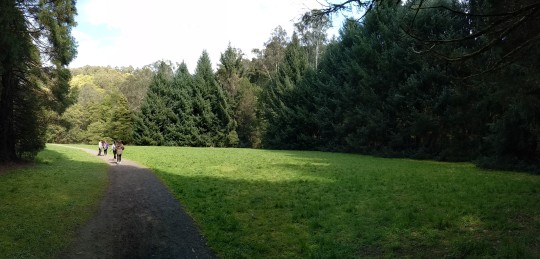
Port Campbell National Park
The Port Campbell National Park is a national park in the south-western district of Victoria, Australia. It features an array of sheer cliffs overlooking offshore islets, rock stacks, gorges, arches, and blow-holes. As part of the Shipwreck Coast, it hosts several tourist attractions; including The Twelve Apostles, the London Arch (formerly London Bridge), Loch Ard Gorge, the Gibson Steps, and The Grotto.
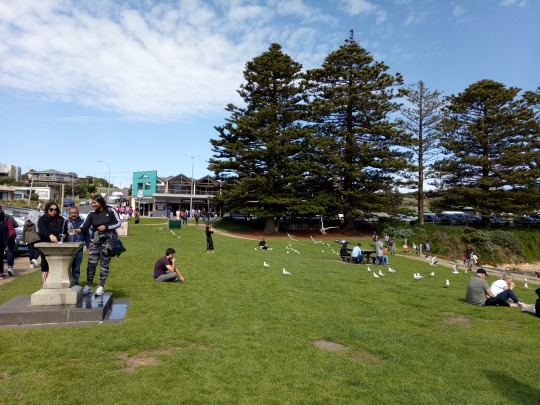
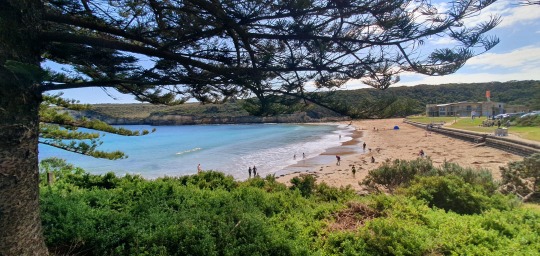
Twelve Apostles
The Twelve Apostles were formed by erosion. Their proximity to one another has made the site a popular tourist attraction. The harsh and extreme weather conditions from the Southern Ocean gradually eroded the soft limestone to form caves in the cliffs, which then become arches that eventually collapse, leaving rock stacks. These massive limestone structures tower 45 metres above the ocean and were formed some 20 million years ago as the sea gradually eroded the soft craggy limestone cliffs.

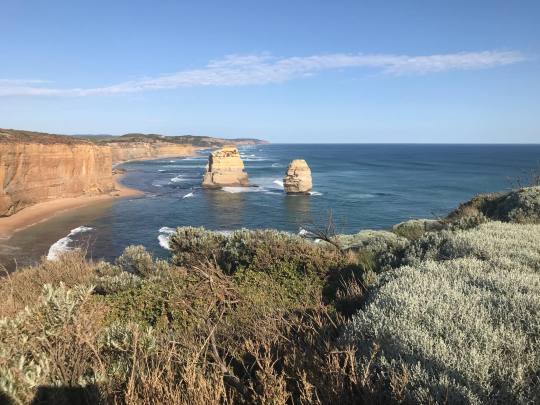
Though the view from the promontory by the Twelve Apostles never included twelve stacks. Seven of the original eight stacks remain standing at the Twelve Apostles viewpoint, after one collapsed in July 2005.
Loch Ard Gorge
Loch Ard Gorge is amazing and only a few minutes drive west of The Twelve Apostles. It was one of the most stunning beaches on the Great Ocean Road
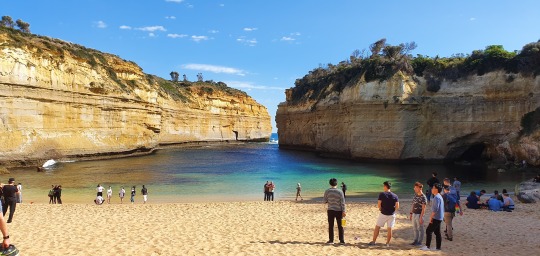
Loch Ard Gorge is named after the ship Loch Ard, which ran aground on nearby Muttonbird Island at the end of a three-month journey from England to Melbourne.
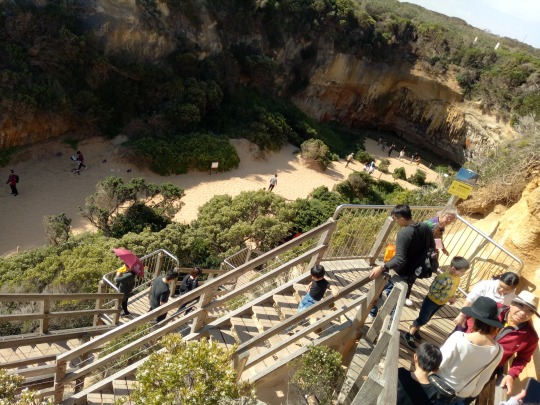
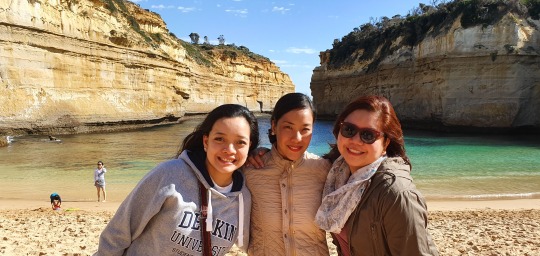
Take the stairs down to the beach and sit in wonder. And there are three easy walks you can take to discover the area and getting viewpoints.
The London Arch (Bridge)
London Arch was formed by a gradual process of erosion, and originally was a complete double-span and was attached to the mainland.
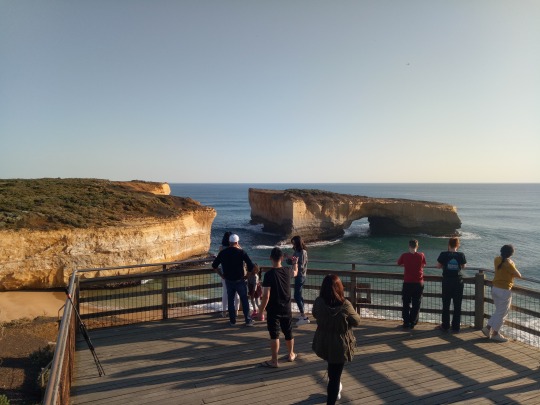
The arch closer to the shoreline collapsed unexpectedly in 1990 leaving two tourists stranded on the outer part until they were rescued by a helicopter. Prior to the collapse, the arch was known as London Bridge because of its similarity to its namesake.

The Grotto
The Grotto is perhaps the most enchanting of all the rock formations in this part of Australia. Part-blowhole, part-archway, part-cave, it offers a peaceful place to enjoy the sea views and soak in the wonderful things nature is capable of.

Standing about halfway up the cliff from the sea level, the geological formation is reachable via a decked staircase that leads down from the viewing platform at the top. You can either view the wonder from above, or head down and explore it at eye-level.
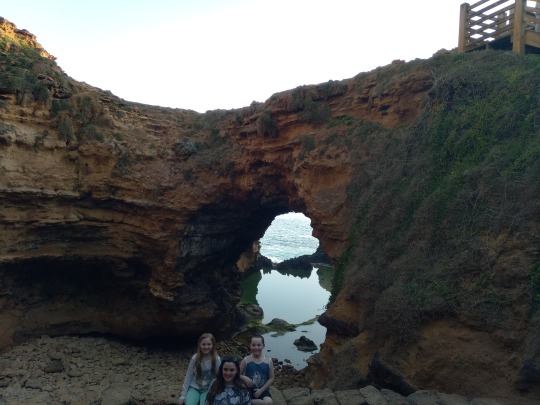
Inside, the Grotto is filled with smooth boulders and serene rock pools that have been carved out of the limestone. For the best view, look into the Grotto from the lower viewing platform, where you can see the horizon, the pools, and the jutting rock formations in one go.
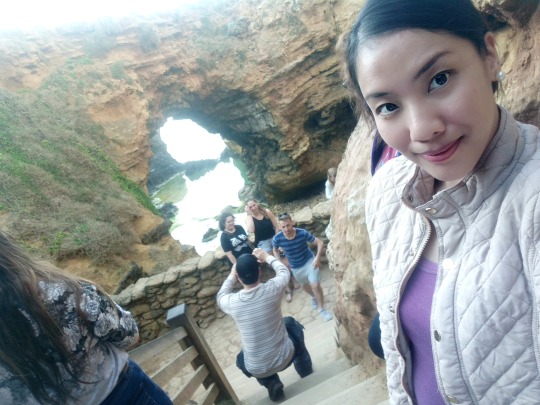
San Remo Coastal Circuit
San Remo is the gateway to Phillip Island, a lively seaside town where fishing and dining options abound and pelicans keep watch along the foreshore. Yes, it was my first time to see some Pelicans. The town of San Remo sits at the end of the bridge connecting Phillip Island to the mainland.
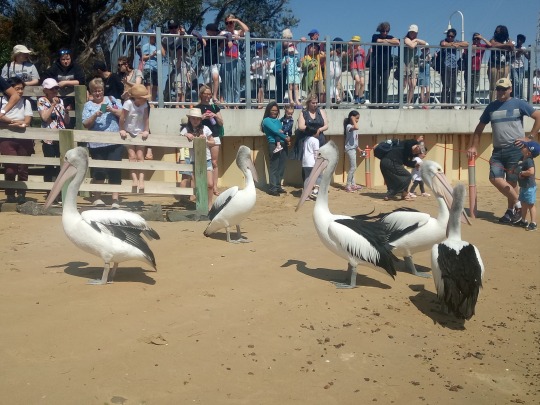
If you love yourself some good ol’ fish and chips, San Remo Fisherman’s Co-op serves up some of the best fish and chips in the area. We bought some before heading over to Phillip Island.
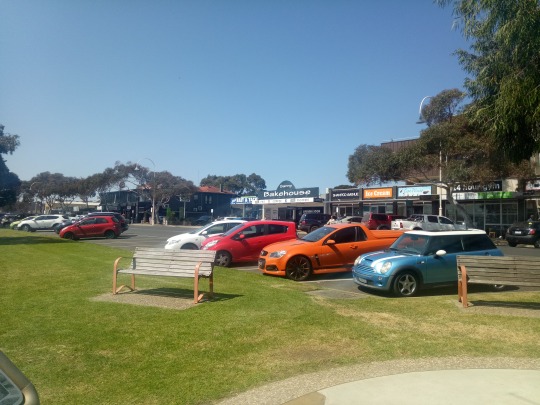
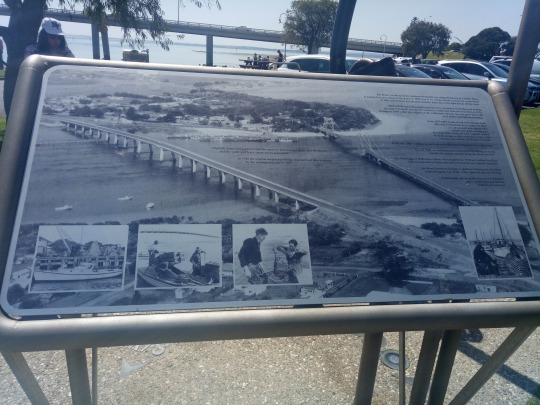
Phillip Island
Located a few hours from the city, Phillip Island is a weekend hot spot for locals looking to enjoy some beach time. The island is renowned for the nightly penguin parade (when thousands of penguins return from the sea to nest), its koala sanctuary, and the huge seal colony that lives offshore. The island can be visited as a day trip, but due to infrequent buses, I would recommend spending at least a night here!
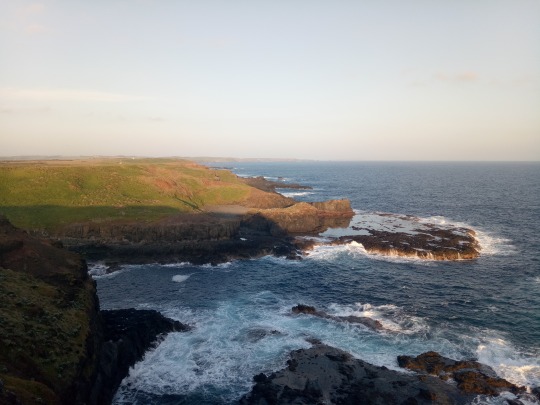
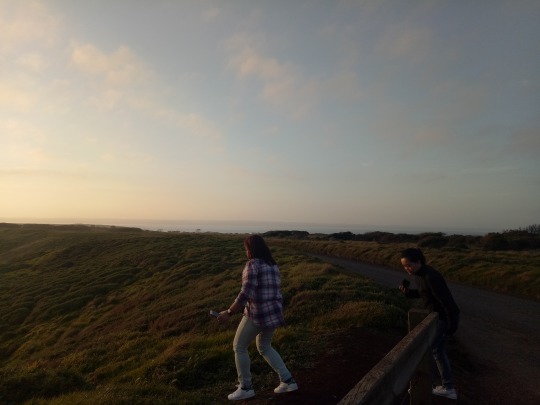

Panny’s Chocolate Factory
Panny’s Amazing World of Chocolate is a series of experiences, each dedicated to another facet of the story of chocolate. Visitors embark on a self guided exploration of the wonders that come from the humble cocoa bean.

There are machines with buttons to push and levers to pull, games of skill, lots of chocolate exhibitions and attractions and a unique hands-on chocolate making device where you create your own chocolate masterpiece that travels along a conveyor belt and is delivered to you, ready to eat. You can learn everything about chocolate making from the bean to the bar and watch Panny’s creations being made by our chocolatiers.
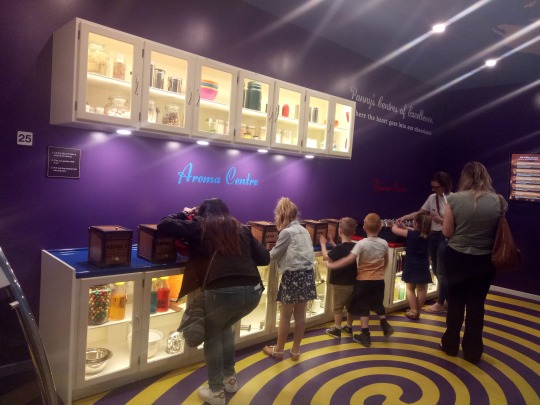
On top of all this, you can produce your very own extraordinary chocolate bar with Panny’s Amazing Chocolate Machine and fill it with the weirdest and wackiest tastes you’re ever likely to find.

Philip Island Koala Conservation Sanctuary
A trip to the land down under can’t possibly be complete without seeing some koalas. Just a 15-minute drive away from Churchill Island is Phillip Island’s very own Koala Reserve. Here, you can get up close to and observe the koalas in their natural habitat, the Australian bushland. Along these boardwalks, you will have exceptional views and exclusive photo opportunities with the koalas. Not only that, but if you’re lucky, you might even get to spot some adorable wallabies and native birds!
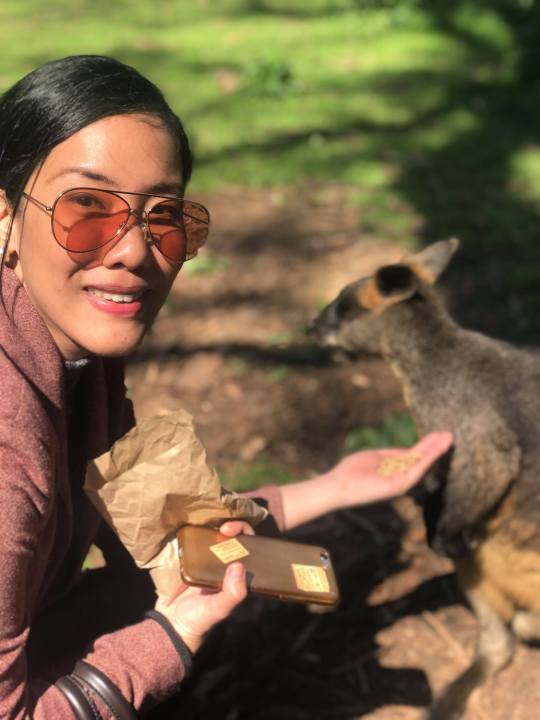
The Noobies :)
The Nobbies is a must visit. Next to the Nobbies centre is a boardwalk. It is a short and easy walk with only a few steps and you are welcomed with some amazing views of Point Grant, Seal Rocks and Bass Straight… From the spectacular view of the boardwalk, you will see nesting penguins in the natural sea bird gardens.

Offshore from The Nobbies are Seal Rocks, home to Australia’s largest Australian Fur Seal colony, so drop a coin into the viewing binoculars and see how many you can spot.

Watching the waves pound against the 50 million year old dark basalt rocks is simply mesmerising and a bold reminder of how formidable Mother Nature really is spectacular!
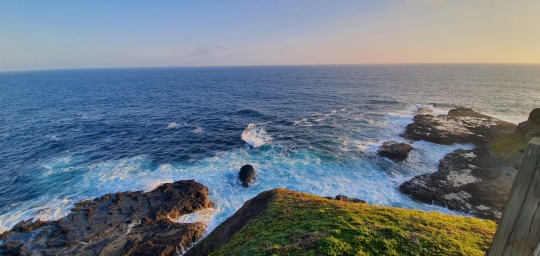
Melbourne CBD
Back to the City to see more of Melbourne’s Sights and Sounds. First, a drop by to the Post Office to deliver something and the rest.. Just walking around. Here’s more:
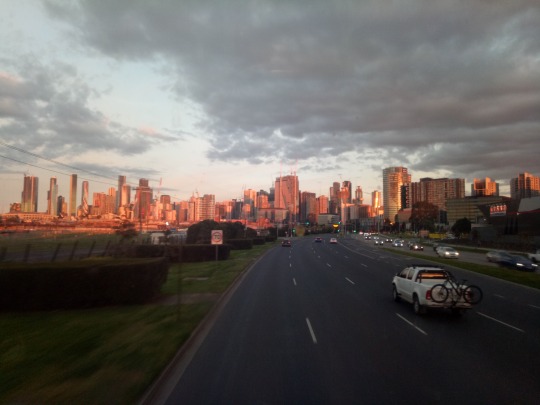
The City Circle Tram
More than just a means of free transportation, the City Circle Tram provides “hop-on, hop-off” service between Melbourne’s sightseeing attractions, including Federation Square, the Old Treasury Building, Parliament House, and the Princess Theater. There’s a running recorded commentary as you pass or stop at a place of historical, cultural, or architectural significance.
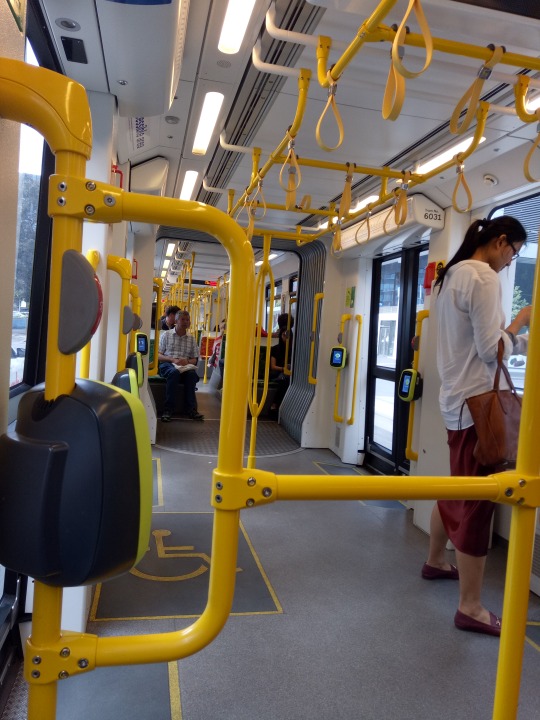
Flinders Street
Right along the route of the free City Circle train and across the street from Flinders Street Station lies Federation Square. This open square also serves up stellar people-watching. I like to take lunch here and just watch the city go by. Below the square on the river are also a number of restaurants and outdoor bars.
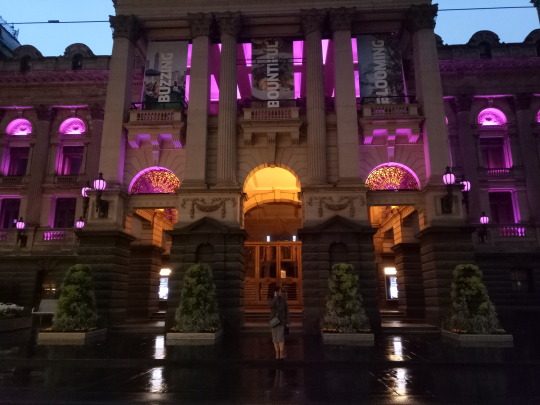
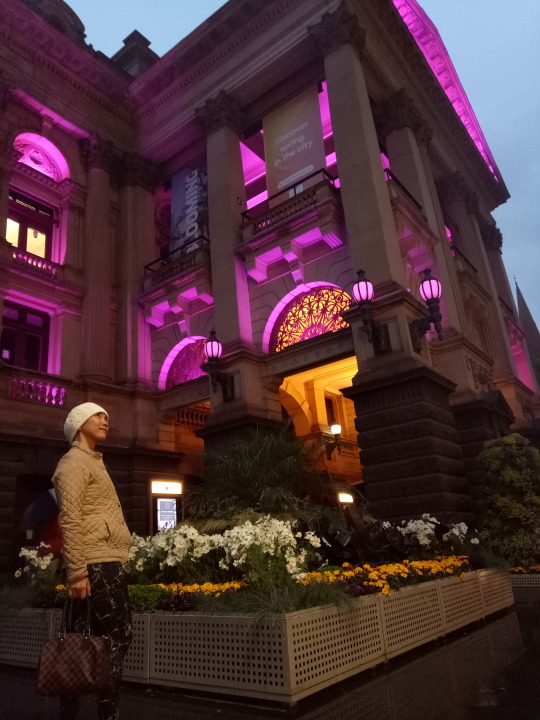
Brunetti


State Library of Victoria
Originally built in 1856, the State Library of Victoria is a historic institution that sees 8 million visitors a year. The library has grown into an event space that’s a source of pride for city residents. There is always a queue of people ready to pounce on the open desks. The famous central rotunda with its octagonal shape, original dark wood furniture, and book-lined walls is definitely something not to miss.
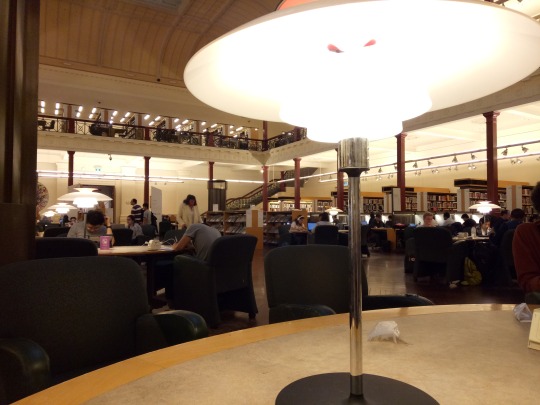
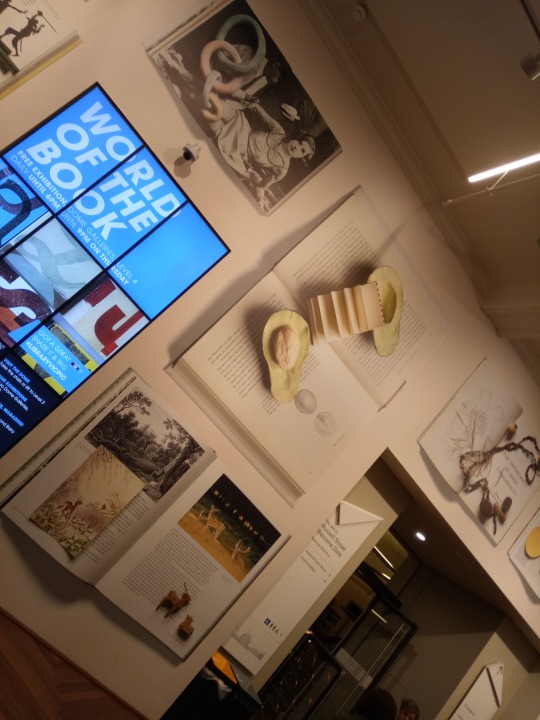
Just fixing my baggage
The highlight of my trip was when my flight was canceled. I had to stay in Melbourne for a couple of days more. It was stressful but I just tried to enjoy the free accommodation and food. Anyways, cant really rely on Cebu Pac when it comes to long haul flights, I decided to book Qantas Air on my way back to Manila.
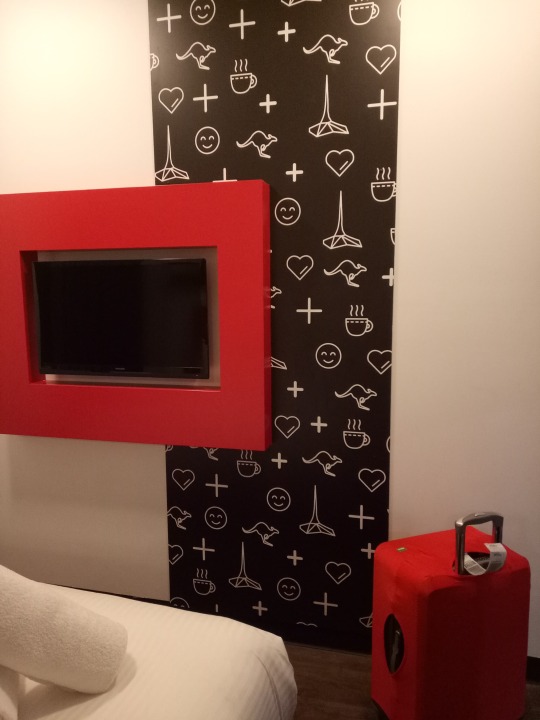
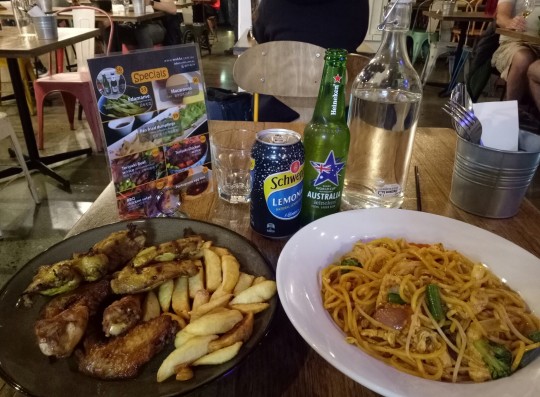
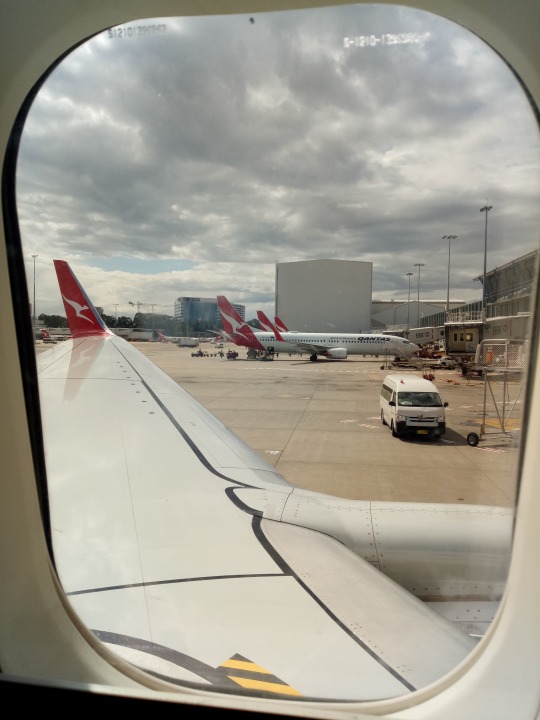
Between all the various day trips and the plethora of activities in the city, you won’t find yourself short on things to do while you’re visiting Melbourne.
0 notes
Note
Why would isayama need to include black people?
ok, prepare yourselves -.-
i’m gonna try and be nice, alright? you could just as easily say why did he choose to make Mikasa half-Japanese? Why bother including her full Japanese mother then *spoilers* creating a whole East Sea clan ?? Just a little something called-
*✧・゚:* IDENTIFICATION*✧・゚:*
Did you know Isayama never planned to make Mikasa half-Japanese? She was going to be fully Caucasian/west European-it literally just struck him one day (app. he saw some model/customer in a coffe shop or suttin) but I am 100% sure that wasn’t the only reason ; Isayama is Japanese. The manga is in Japanese. He is in japan.
Now I wouldn’t have batted and eyelid if the cast was all-Japanese ; like okay, it’s exclusively for a Japanese audience but the fact that Mikasa is the only one naturally stuck out to me-everyone else is white, ok cool, cool again this is something I’m used to in the anime industry-but then we’re told these are the last remaining humans on earth & i’m sorry but anyone would be like whoa hold up-no people of colour survived?? and it isn’t only until way down in the manga that we learn *spoilers* that no that isn’t the case-errbody’s chillin except for the poor eldians (ch 98 woop) so technically he DID include black people, like in one panel :)
NOW lemme backtrack real quick here-so we have this badass, beautiful female character who happens to be the only remaining member of the Asian bloodline within the walls-how bloody amazing must that have been for the Japanese audience, do you think?? It’s nice-hella gratifying, no? Ok now apply that concept here-how fucking lit would it have been to have a person of colour as part of the main cast? Listen, all it took for me to start squealing was a less than half a page panel of vaguely brown people in ch98, ok? I . was . on . the . floor . THAT even in it’s weakest and most diluted form is called Self-identification, mon ami.
What I’m on about is this: Isayama almost without a doubt decided to include Mikasa as Mikasa in order to better engage the Japanese audience which leads to the question-is that it? Did he not care to appeal to or engage any other group besides white & japanese people across the world? -honestly I don’t believe he was thinking that far ahead-he probably never thought snk would become what it is today BUT & here’s the big but-the rest of the cast says a lot about, not necessarily his current, but certainly previous mindset (again this is recurrent in the anime industry so i’m not really blaming him).
Having everyone else being exclusively white European, the amount of research & thought he poured into Norse mythology and German nomenclature-that was effort & required serious thinking outside the box. Did he not feel the need to do so for any other group-was it too complicated, too distracting or did he not have the time?? Who knows? And what’s more-idk maybe this is just me & I don’t know how much attention you’ve been paying to imagery/motifs, but I kept on stumbling on some very afro-centred symbols the largest & most obvious being the Marley continent-Africa, really? YES I KNOW it isn’t meant to actually be the African continent but still-to use such a huge, hella representative icon in a manga where there are no black people in active roles? Frankly it’s just odd, probably not of any significance to a non-black person, but anyone with roots in Africa would wonder-I honestly believed ‘shit is Isa gonna finally intro some black characters’ lol. Then there’s the whole ‘tree of life’ imagery and here one could arguably say that’s why Isa chose to centralise the manga around a more European/ Nordic culture WELL, here’s some news for you- The concept of the ‘tree of Life’ is rampant, absolutely rampant, in Africa and appears in so many cultures across the continent-he didn’t know? Didn’t bother? It’s a shame really because he missed the opportunity to combine two very different cultures with a central common theme which, tbh would’ve been bloody amazing in terms of the plot.
Maybe because it was just easier-I mean it’s just another all white cast except this time they’re actually tied to “Europe”/ a European-like setting. And ngl I kept on trying to gloss it over in my head: ‘it’s fine/its the standard/get used to it/ this is how the manga/anime industry is/get over yourself/it’s normal BUT IT ISN’T-bc that’s NOT how things are-there are poc on every civilised/man-occupied land on this earth & there are A LOT- they are the majority.
& NO japan is not oblivious of people of colour-the non-Japanese population is growing everyday-THEY KNOW VERY WELL who black people are (given the, lets just say, less than favourable representations of them in anime/media). Not as welcome as their non-poc counterparts, hmm? Japan has been conditioned (look at anime/manga character design in general fgs) to accept and internalise European aesthetics so an almost all white cast is just easier-easier to introduce, easier to implement-black character (like actually black NOT ‘dark-skin Japanese/greek/Spanish etc)? why tho? Why go through all that hassle?
Why not.
because these are people-and it’s so sick & twisted that we’re still letting things like skin colour, the amount of a certain pigment in our bodies determine how we live and think. You asked why do black people need to be in snk and i’m gonna rebut real damn hard (sorry not sorry)-WHY NOT? Yh maybe they’re not that tantamount to the storyline or plot but neither is Mikasa’s being half-japanese-Isayama could have, would have just created another Caucasian bloodline like the Ackermans. No matter how you look at it-it’s hard to refute the fact that he wanted Japanese readers/viewers to gain some form of affirmation.
And honestly (I shit you not) I could write a book but I’ll leave you with this: there was a post I came across when I first joined tumblr in the summer-it was a photoset of an artist who had done some snk fanart for a younger female relative of theirs: https://desertbl00m.tumblr.com/post/162481882946/vibraniumbabe-i-did-this-drawing-as-a-surprise
Look at her face-look how happy and overwhelmed she is-why does he need to indeed?
#{phew}#{sorry if this is somewhat incomprehensible but I hope you got the message}#{Now-this is MY OPINION & how I feel about the sit.-you asked I answered}#{poc = people of colour btw}#{well this exploded :)}#{are those smudges ink? or dark circles? ; ooc}#{fucking dark circles smfh}#¬¬what the hell...?¬¬#¬¬faces unknown;; faces alien¬¬
2 notes
·
View notes
Text
The Holy Mountain
I spent a few weeks last summer in the Engadine valley in Switzerland. It is a place that has been dear to me since early childhood. In the Spinas valley, which forks off from the main Engadine valley, there is a footpath called the ‘Märchenweg’ – the fairytale path. Every kilometer or so, in a small clearing, stands a wooden chair carved from the trunk of a tree. The chair is surrounded by smaller tree segments that serve as stools. Inside the chair is a wooden file that contains the text of a fairytale from the area. Each story is printed in 5 languages – German, French, Italian, English and Romantsch, the local tongue that is a remnant of the Latin spoken by Roman legionaries stationed here.
These six little clearings, with their storyteller’s chairs, are paid for by the village council and have always epitomized for me everything that is best about Switzerland. I have written about them before in a previous blog, but the charm does not fade. They bring to mind the lovely German expression eine heile Welt – an unbroken world. For me, it is a counterweight to global politics, economic crises, climate change, refugees, pain in all its many forms. Back in August, I did a drawing of one of these circles of chairs. It felt very peaceful.
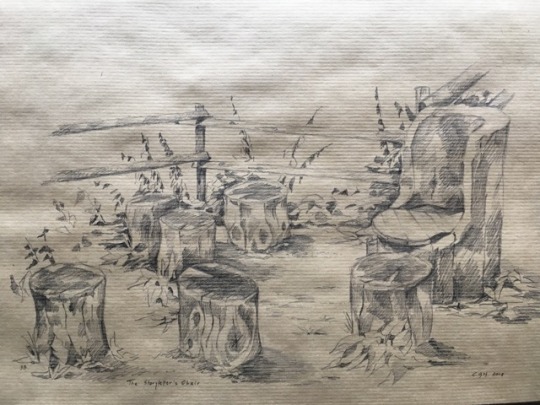
That same evening, I watched a short documentary segment in the Swiss news about Najah al-Bukai, a Syrian artist with a photographic memory who was held and tortured in one of the regime’s detention centres. He finally managed to escape from Syria, and now lives in Paris where he creates, from memory, haunting images from his time in the detention centre. Talking about his work, he says, ‘It is a personal therapy that allows me to evacuate.’ In an emotional sense, one assumes.
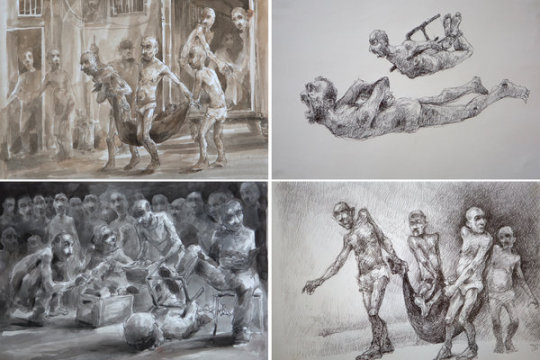
Drawings by Najah Al Bukai
After watching this report, I felt that my own work was embarrassingly frivolous by comparison. The feeling persisted for some days, until it dawned on me that although the outcomes could scarcely be more different, our motivations are similar: drawing, and art in general, as a form of therapy, and a way to find tranquility. With that in mind, I completed a few more small pieces.
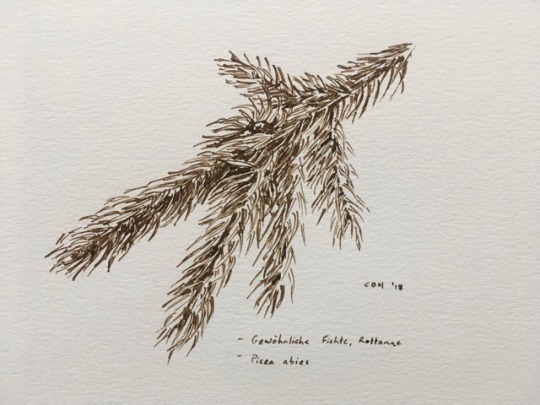
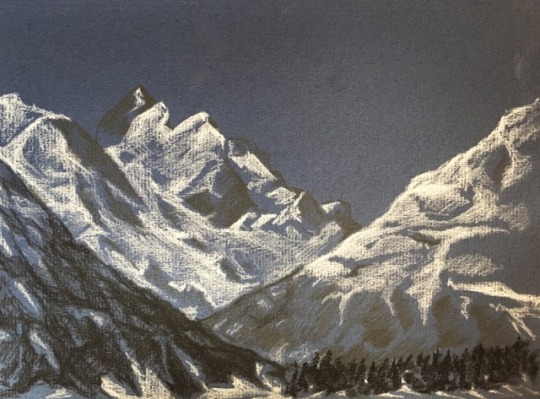
*
Once back in Athens, I lost some of that Swiss tranquility. The summer is long, and the pleasure-seeking attitude that goes with it leaves a psychological hangover. This was the first anniversary of my life in Greece. The first 8 months had been busy, finding a place to live, and a place to work, doing them both up, taking my first steps in learning the language, and accumulating the thousand and one small objects that are required for a comfortable settled existence in a Western metropolis. The next 4 months had been summer, with friends visiting, and time spent out of doors. And now I had run out of excuses, and pocket money; I needed to knuckle down and get to work, and that made me feel… restless and unbalanced. Not that I wanted to be elsewhere, just that I was not accustomed to long periods of focused activity. That, and the underlying anxiety that my output would fail to live up to my aspirations.
Ironically, the one thing that my restless mind was able to settle on was the thought of restlessness itself; I kept coming back to this. We must surely live in the most restless of times. Scrolling through social media, multitasking, channel-hopping, budget travel… these are all expressions of our restlessness. It is not as acute in Greece as elsewhere, which is partly why I like living here, but it still exists. Very few people are unaffected - that is perhaps a lifetime’s work.
I sometimes think back to an older English lady I knew in Beirut. She was married to a Lebanese man. For some years they had lived in Dubai. She once narrated to me a particularly cherished memory: she remembered waking up one morning in their house in Dubai, the sun filtering through the curtains, her husband back from a business trip and fixing breakfast in the kitchen, and the sound of her two children playing in the garden. And at that moment, she told me, she felt at perfect peace. Everything she wanted or cared about was right there, within reach. She was, for once, free from desire.
It is a beautiful image, and an enviable one… ‘So far the poet.’ But what the narrative does not reveal is the transience. Her husband will go away on business again. Her children will grow up. Dissatisfaction will return. How does one address the root?
*
This is the background against which two significant things happened to me recently. The first is a book, and the second a short trip.
Over the summer, a close friend recommended Empire of the Summer Moon, an outstanding book by S. C. Gwynne, about the rise and fall of the Comanche tribe on the American Great Plains, towards the end of the 1800s. It has made me reconsider some of my most deeply held convictions.
Like most boys of my generation and background, I grew up admiring the cowboys of the old Wild West. They were brave, independent, steely men. They were fighting against savages whose custom it was to scalp people. And, I suppose, the cowboys were white and basically European.
Then, when I was old enough to question the cartoons and comics and movies that had shaped this worldview, I had to confront some nasty truths. The whites took the land from the Indian tribes, who had never believed in ownership in our modern sense anyway. The Indians had lived off the land, and roamed freely over it. The whites made treaties and broke them. They were driven by greed. Before the cowboys, there were Spanish missionaries who had attempted to impose their God – the same God in whose name much of South America had been enslaved – on an indigenous culture that lived in harmony with the natural world, and whose spirituality was a living breathing thing, not relegated to a clapboard Church once a week.
That is how I started to think. And corroboration was not hard to find. I read about C. G. Jung’s visit to Taos Pueblo in New Mexico in 1925. Jung met and befriended Ochway Biano (‘Mountain Lake’), the medicine man of the tribe. In Modern Man in Search of a Soul (1933), Jung quoted Ochway Biano:
‘See,’ Ochway Biano said, ‘how cruel the whites look. Their lips are thin, their noses sharp, their faces furrowed and distorted by folds. Their eyes have a staring expression; they are always seeking something. What are they seeking? The whites always want something; they are uneasy and restless. We do not know what they want. We do not understand them. We think they are mad.’
Yes, I thought. We are always uneasy and restless. And perhaps mad too.
Then I read Cormac McCarthy’s magnificent Blood Meridian, and it seemed that white moral supremacy was a myth too: the whites were also scalping the Indians on punitive missions. It was a bloodbath all round.
I read The Gospel of the Redman by Ernest Thompson Seton, a writer and wildlife artist who later became the founder of the Boy Scouts of America. In it, he records the dedication that a Tekahionwake Indian was expected to speak over the body of a deer he had just killed, and I was moved by it, much more so than the bland Christian ‘Grace’ intoned at school mealtimes.
To The Dead Deer
I am sorry I had to kill thee, Little Brother.
But I had need of thy meat.
My children were hungry and crying for food.
Forgive me, Little Brother.
I will do honour to thy courage, thy strength and thy beauty.
See, I will hang thine horns on this tree.
I will decorate them with red streamers.
Each time I pass, I will remember thee and do honour to thy spirit.
I am sorry I had to kill thee.
Forgive me, Little Brother.
I went on to study psychology, and focused on the psychology of shamanism, and traveled to the Amazon to explore an indigenous worldview that created a matrix of meaning in which myth, history, culture, medicine, ritual, cosmology, and the natural world all hung together in a coherent and purposive whole… and this is what the early missionaries had demonized as ‘devil-worship’! My own experience, naïvely romanticizing as it may sound, was that people are happier, calmer, and less neurotic the less exposure they have had to Western values. And the indigenous perspective often seemed much more beautiful too.
(for more on this, see http://www.clausvonbohlen.com/post/20467603477/what-can-we-learn-from-shamanism)
So, I have been pretty down on the ‘achievements’ of the West for most of my adult life (though nevertheless grateful for advances in medicine and dentistry, and appreciative of certain artistic achievements).
But Empire of the Summer Moon has given me a lot to think about. The book charts the rise and fall of the Comanche tribe, with a particular emphasis on the story of Cynthia Ann Parker. Cynthia Ann was the daughter of settlers whose small fort was attacked and overrun by a Comanche raiding party in 1836, when Cynthia Ann was 9 years old. She was taken captive, along with her younger brother, her 17 year old aunt and her aunt’s infant son, and another young woman called Elizabeth Kellogg.
Before being captured, Cynthia Ann saw her father scalped and her grandmother raped. Then the prisoners were tied to their Comanche captors on horseback. The Comanche rode hard to distance themselves from possible pursuit. When they camped for the night, the two ‘adult’ women - Rachel (17) and Elizabeth Kellogg - were gang raped in front of the children. Rachel Parker’s baby was eventually dismembered by being dragged around behind a horse. 9 year old Cynthia Ann went on to be adopted by a Comanche family, and eventually married a Comanche chief. Their son, Qanah, was the last chief of the Comanches, and the book also tells the story of his life.
But so what? A one-off story of brutality from an unusually vindictive Native American tribe, right? Well, that is what I would previously have thought. But, if the author is to be believed – and the book is an impressive and well-referenced work of scholarship – then this was not a one-off incident at all. Raiding and counter-raiding had been the norm for Indian tribes long before the first whites arrived. And raiding was always conducted with astonishing brutality: men who were not killed were invariably tortured, women were gang raped, and babies were generally skewered.
The picture that emerges from this book is one of a culture without anything that we would recognise as morality. There were certainly taboos, and spirits to be placated, but it is a far cry from the notion that I have long cherished, of peace-loving peoples living in harmony with each other and with the natural world. The author writes:
It is impossible to read Rachel Plummer’s memoir without making moral judgments about the Comanches. The torture-killing of a defenseless seven-week old infant, by committee decision no less, is an act of almost demonic immorality by any modern standard. The systematic gang-rape of women captives seems to border on criminal perversion, if not some very advanced form of evil. The vast majority of Anglo-European settlers in the American West would have agreed with those assessments. To them, Comanches were thugs and killers, devoid of ordinary decency, sympathy, or mercy. Not only did they inflict horrific suffering, but from all evidence they enjoyed it. This was perhaps the worst part, and certainly the most frightening. Making people scream in pain was interesting and rewarding for them, just as it is interesting and rewarding for young boys in modern-day America to torture frogs or pull the legs off grasshoppers. Boys presumably grow out of that; for Indians, it was an important part of their adult culture and one they accepted without challenge.
The first shock, for me, was the realization of the wanton cruelty of native Americans towards each other. The second shock was that they saw nothing wrong with this, as the following passage makes clear:
Enemies, meanwhile, were enemies, and the rules for dealing with them had come down through a thousand years. A Comanche brave who captured a live Ute would torture him to death without question. It was what everyone had always done, what the Sioux did to the Assiniboine, what the Crow did to the Blackfeet. A Comanche captured by a Ute would expect to receive exactly the same treatment (thus making him weirdly consistent with the idea of the Golden Rule), which was why Indians always fought to the last breath on battlefields, to the astonishment of Europeans and Americans. There were no exceptions. Of course, the same Indians also believed, quite as deeply, in blood vengeance. The life of the warrior tortured to death would be paid for with another torture-killing if possible, preferably even more hideous than the first. This, too, was seen as fair play by all Indians in the Americas.
I have recently been reading the Odyssey, and I have been struck by a similar absence of moral sentiment in it. At no point does anyone question whether there are any values beyond strength and skill. Even heroic Odysseus boasts about putting all the men of a city to the sword, and carrying off the women, just because he could. But we ought not to be surprised by this; it wasn’t until the time of Socrates and Aristotle, some 300 years later, that people first started to question whether might is always right (at least as far as written records reveal).
The parallel between Homeric times and Native Americans should not be surprising either: the Maecenean period that is the basis of Homer’s narrative was a late bronze age culture, whilst the Native Americans were – in terms of their technology - a stone age people. The two have a lot more in common with each other than with the highly organised, industrialized West that the white settlers represented.
S. C. Gwynne argues that morality as we understand it today is closely linked to complex social organization. But this kind of organization only develops when large numbers of people can live together in one place, and when they have the leisure to develop capacities which are not directly related to meeting the most basic human needs. Agriculture made this possible, but agriculture is something which the Native American tribes did not begin to practise until the arrival of Anglo-Europeans. Plains Indians such as the Comanche remained nomadic hunter-gatherers until the bitter end. If this theory is correct, it means that there is a direct causal connection between higher moral values on the one hand, and complex civilization on the other. Morality has developed in conjunction with the increasing complexity of human society. This was a big realization for me. For all of my adult life, I have thought that the opposite is true.
*
The second significant event was a trip, at the end of October, to visit Mt. Athos, the ‘Holy Mountain’ in the north of Greece. It towers over the tip of a peninsula that sticks out into the Aegean. The whole peninsula is an autonomous monastic region; women and domestic female animals are not permitted. The area is sacred to the ‘Panayia’ - the Virgin Mary - and it is also known as ‘the Garden of the Mother of God’. There are about 20 functioning monasteries on the peninsula, connected to each other by footpaths and dirt roads. Some of them were founded a thousand years ago.
Permits are not easy to come by for non-Orthodox visitors. I have wanted to visit Mt. Athos for some time, but in the end I could only go when they happened to have a permit to spare, though happily still before the winter. I was planning to walk from monastery to monastery in traditional fashion. Board and lodging in the monasteries is included in the cost of the permit, but you do have to book ahead. I set about doing this from Athens, but again, it was not easy – the monasteries only answer the phone at very specific times, for a couple of hours, and often in heavily accented Greek. In addition, it is hard to know exactly how long it will take to walk from one monastery to another, and you do not want to arrive too late since the gates are locked at sunset and remain closed until the following morning.
I approached this trip as if it were a short trek. I was looking forward to seeing a new area of Greece, and to spending some days walking through virgin forests. The absence of technology and commerce was appealing too. I had my rucksack, my half-read copy of Empire of the Summer Moon, a sleeping bag, and a loaf of bread – the latter two in case I did miscalculate and ended up being locked out.
I left Athens at midday and arrived in Thessaloniki around sunset. It was a Saturday evening and Thessaloniki had a lively, friendly feel to it. I bought some gourmet trail mix on the promenade, then pushed on to Ouranoupolis, the jumping off point for Mt. Athos. The last two hours of the drive were along winding, misty roads through a forest, in the dark. I was listening to ‘Up and Vanished’, a podcast about a real life murder investigation in a provincial American backwater. All together, it made for a spooky drive, particularly when a large truck tailgated me for some distance.
I spent the night in a small hotel in Ouranoupolis. At 7.30 the following morning, I made my way to the Pilgrims’ Office to pick up my permit. The office only opened at 8, but I thought I would get there early to avoid any last minute mishaps (there was only one ferry to Mt. Athos and it left at 9.30). I was surprised that the office was already open when I arrived, and even more surprised to see a queue of at least fifty people waiting to receive their permits. They were wearing a lot of black leather. Many of them looked more like football hooligans than pilgrims. Almost all of them spoke Russian, though I was later to discover that they came from a number of Orthodox countries – Romania, Bulgaria, Serbia, Ukraine and Georgia as well as Russia. Being Orthodox, it is easier for them to get permits.
The queue moved faster than I had anticipated and I soon had my permit. I proceeded to the ticket office for the small ferry, and had to queue again, with the same crowd. After a tasteless breakfast by the quay, most of it spent swatting flies, I boarded the ferry. There were no longer any women to be seen, and a holiday atmosphere prevailed. As the ferry nosed towards Athos, some of the Russians pulled cans of beer from their pockets and cracked them open. Others threw pieces of bread into the air for the trailing seagulls to catch. My particularly thuggish looking neighbors kept turning in their seats and inadvertently (I think) elbowing me. I put my headphones on and returned to the murder investigation podcast. This was not quite as I had imagined.
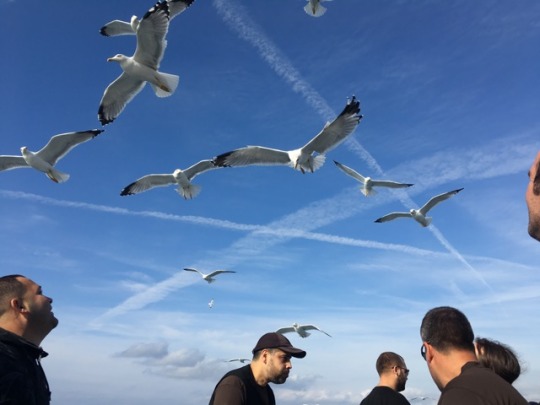
The ferry stopped at each of the monasteries along the way to the tiny port of Dafni. I had planned to walk from Dafni, across the peninsula, to the monastery of Iviron on the east side. But when we docked, I saw that two buses were waiting to take people to Karyes, the administrative centre of Mt. Athos, and half way to Iviron. If I took the bus, I would be sure of arriving at Iviron before sunset. I climbed on board, and encountered one of the more characteristic aspects of life on Athos: male body odor. It would appear that, in the absence of women, men wash less, or smell more, or both. Boys’ schools are the same, as, I imagine, are armies.
The bus to Karyes took half an hour, on a dirt road, and from there I walked to Iviron monastery. The morning’s clouds cleared and I was granted some beautiful views of Mt. Athos itself, to the south. For over two hours, I only saw one other walker; the other pilgrims had vanished. This continued to be the case for the whole three days – once or twice I encountered an Athonite monk, but no other pilgrims. And this solitude contributed to a deep sense of peacefulness.
As I walked, I studied the piece of paper I had picked up in the permit office, detailing guidelines for visitors. These were quite strict – no shorts, no bathing etc. (not unrelated to the body odor, perhaps). The paper began by welcoming me to the ‘Garden of the Mother of God’… what a beautiful phrase! Garden, Mother, God… what’s not to like? But what does it really mean? How can God, the life-force that animates the universe, have a mother in any meaningful sense? Is it not the narrowest anthropocentrism? So beautiful, and yet, once again, I felt on the outside… the foreigner, the observer, wishing I could believe in something so lovely, but unable to deceive myself.
These ruminations were cut short by the appearance of Iviron itself, a medieval fortified keep beside the sea. I located the guestmaster, was shown to my room, and then attended the afternoon service. There was incense, and chanting, and monks in black habits with long beards. I admired the ritual, and the solemnity, and found it wholly unintelligible. There were other pilgrims too, all Orthodox, who appeared to know exactly what to do, and went in for an orgy of icon-kissing and crossing of their chests – so often, in fact, that it began to look like a nervous tick, rather than a sign of devotion. After the service, we were led across the courtyard to the refectory. Here there were two long tables with plates of roast fish in front of every place. We ate while listening to a reading from the Bible, in Alexandrian Greek.
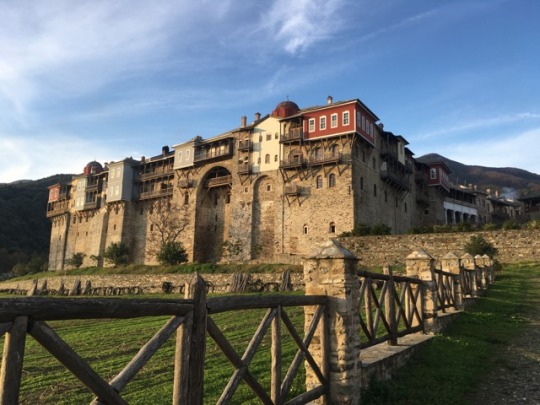
Iviron
After dinner, we filed out into the courtyard, where it was still light. The half hour after meals was one of the few times when monks appeared to talk to each other. I wandered by myself between groups of Russian speaking pilgrims and pairs of Greek speaking monks. I went outside for a few minutes before the gates were closed for the night; there were Russians smoking outside. Then, as I crossed the courtyard again, I was astonished to hear two English accents, emanating from two bearded old monks. I approached them and introduced myself.
Both were indeed English, and both had converted to the Orthodox faith a long time ago. One had initially lived in a Coptic monastery in the Sinai desert, the other had been a doctor, then a psychiatrist, then a priest, then an Anglican monk, and now, finally, a monk on Athos. And they also wanted to know why I was there. I told them, as best I could.
Brother David saw through my meandering narrative. ‘If you are genuine in your search, then God will reveal himself to you,’ he said.
‘But there is so much that doesn’t make sense,’ I said. ‘Like the Garden of the Mother of God… it’s a beautiful idea, but how can God have a mother?’
‘Well,’ said Brother David, ’We believe that Christ was human, so he had a mother, but he was God too.’
Of course! How foolish of me not to think of that! I felt myself blush.
‘You may find that mysterious, and it is. But if you follow this path, then over the years, many mysteries will become clear to you.’
‘But I am not sure I can just believe something because someone, or some book, says so. That is what I like about Buddhism – it’s experiential, empirical, scientific. You practise a technique, and then you see whether it works, whether your experience matches that of others.’
Brother Irodio, the ex-Copt, had been less talkative so far, but now he said, ‘That is what the Orthodox religion is like. We train ourselves too, over a lifetime. And then, over time, God reveals himself to us.’
For a long time now, I have thought of myself as a pluralist. Most religions consider themselves to have a monopoly on the truth, and that has always struck me as highly dubious. From within the perspective of any given religion, the claims and the texts and the norms are perfectly coherent… everything hangs together and makes sense. But the same applies across the board, to all religions. So why are Christian arguments that rely for their evidence on the Bible any more compelling than Moslem arguments that rely on the Koran?
Brother Irodio and Brother David made no effort whatsoever to convert me. But Brother David in particular emanated a peacefulness, and a warmth, that made a deep impression on me. And this quality of peacefulness, this sense of Eine Heile Welt, grew deeper with every day that I spent on the Holy Mountain.
Of course, you might say that it is hardly surprising that these monks seem peaceful – there are no women to distract them, and they have no money to worry about, and nothing to buy or own. That is true. But I think that many people would find that very challenging. Many people actually like the drama, the games, the getting and having and then again spending or losing…. But I am not sure that I do, any more. And sometimes, maybe all that noise is a way of distracting oneself from what is going on inside.
The following morning I left early, while the monastery was still shrouded in mist. I continued south along the coast for about an hour, then struck inland to cross the peninsula from east to west. The dirt road snaked its way upwards to the central ridge. A couple of pick up trucks drove past me, and both times the monks stopped to ask if I was lost. One of the monks was American, and when I told him that I was heading to Osoriou Gregoriou, he told me the name of an English monk there.
The leaves were falling and I was reminded of a previous pilgrimage some years ago, to Santiago de Compostela, much of which was also during autumn. The temperature dropped as I got closer to the ridge. On a couple of occasions I passed monks chopping down trees. They used chainsaws, but enormous shire horses were waiting to drag the trunks out of the woods. When the horses snorted, conical clouds of condensation jetted from their nostrils.
I crossed the central ridge, with the peak of Athos to my left, then descended steeply down the other side towards the more sheltered west coast of the peninsula. I arrived at the monastery of Osoriou Gregoriou in the middle of the afternoon. While waiting for the guestmaster, I chatted to a rotund monk from Kalamata who had formerly been a pizza delivery boy. He was keen to reminisce about English football, and I fear I was rather a disappointment to him.
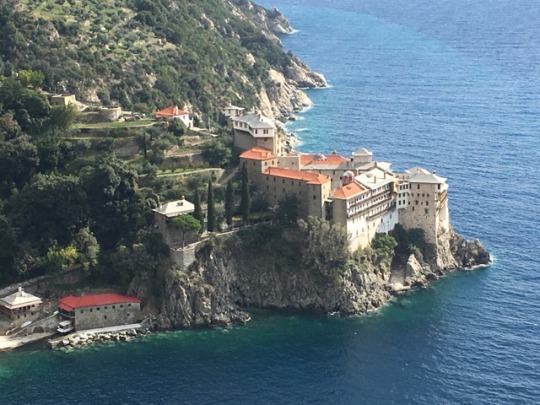
Osoriou Gregoriou
Osoriou Gregoriou is perched above the water. Mondays are days of fasting, and the evening meal was a bowl of lentils, but the meager fare was made up for by the sight and sound of the sea directly below us. After dinner I enquired after brother Damien, the English monk. I was led down a number of staircases to a bookbindery where Brother Damien was putting the finishing touches on a newly bound spine. He had a curly grey beard and a humorous manner. He was originally from Stockwell in South London, just down the road from where I used to live in Brixton.
We chatted that evening, and again after breakfast the following morning (which was in stark contrast to the evening meal – it was accompanied by wine, and finished off with a Ferrero Rocher chocolate). To say that Brother Damien was a conspiracy theorist would be an understatement, and I don’t particularly want to go into all that again, nor relive the sense of vertigo the conversation gave me (admittedly, we were also perched on a small wooden balcony above the sea). But I am grateful to Brother Damien for introducing me to the concept of ‘Theosis’. This is perhaps the central tenet of the Orthodox religion. It holds that the true purpose of human life is nothing less than for man to become one with God, to become a god himself.
When I said goodbye, Brother Damien gave me a slim volume written by Archmandrite Georgios, the former Abbot of the monastery. It was entitled ‘Vergöttlichung: Das Ziel eines Menschenlebens’. He only had this German copy, but I later found an English version. The English title is, ‘Theosis: The True Purpose of Human Life.’
I left Osoriou Gregoriou and headed north, back towards Dafni. After about an hour I passed through the beautiful gardens of Simonas Petras. The monastery itself towered above me, its walls inconceivably high, like CGI battlements from a Lord of the Rings movie. I passed back through Dafni and then climbed the final hour up to Xiropotamou monastery. Here the friendly young Romanian guestmaster (not a monk) plied me with tsipouro (Greek Schnapps) and Turkish Delight. Perhaps he felt he was atoning for the monastery, since it was rather an austere place: being non-Orthodox, I was not allowed to attend services or even eat at the same time as the monks.
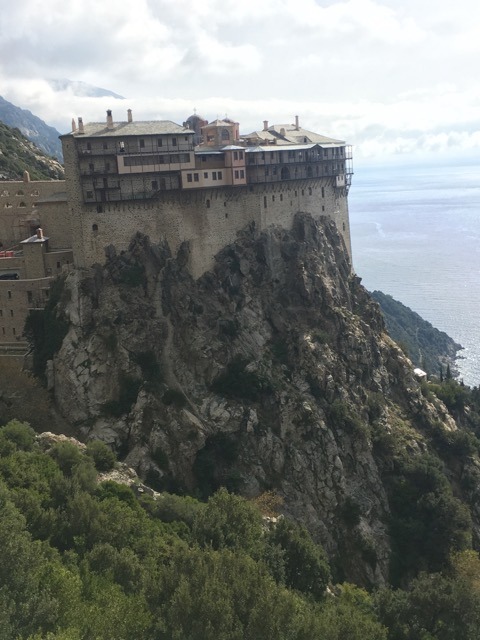
Simonas Petras
That evening I read Archmandrite Georgios’ book on Theosis. He wrote:
Since man is “called to be a god” (i.e. was created to become a god), as long as he does not find himself on the path of Theosis he feels an emptiness within himself… he feels that something is not going right, so he is not joyful even when he is trying to cover the emptiness with other activities. He may numb himself, create a glamorous world, or cage and imprison himself within this world, yet at the same time he remains poor, small, limited. He may organise his life in such a way that he is almost never at peace, never alone with himself. Surrounded by noise, tension, television, radio, continuous information about this and that, he may seek to forget with drugs; not to think, not to worry, not to remember that he is on the wrong path and has strayed from his purpose.
In the end, wretched contemporary man finds no rest until he finds that “something else,” the highest thing; the thing which actually exists in his life which is truly beautiful and creative.
That gave me plenty to think about.
The following morning I again left before the sun had risen. There are terraces behind the monastery where many gnarled olive trees grow. I saw a monk with a great white beard and a staff; he was walking between the trees and inspecting the leaves. He seemed so entirely at peace with himself and the world, his world. A wave of emotion swept over me in that moment – there is such a thing as eine Heile Welt. And there are great mysteries too.
As I returned to Dafni to catch the ferry, I wondered about that wave of emotion: was it a tiny experience of what the faithful call ‘Grace’, something like a gift from God? And that bearded monk in the cool of the morning… for years I have assumed that men have anthropomorphized God, that we have created him in our image. But maybe I’m wrong? Maybe we really are created in the image of God? Not that God is male and bearded, nothing as simplistic as that, but maybe we do share some of God’s qualities? Maybe the divine is less abstract than I have always assumed? Maybe a personal relationship is not only possible, but necessary?
Since I was 11 years old, when I dropped out of confirmation class, I have not considered myself a Christian. A few years later, at boarding school, I encountered a couple of Reverends who could scarcely have been less inspiring: one a sad weasely figure, the other an ignorant bully and former army Padre who tried to show off about how many Argentinians he had killed during the Falklands War. Chapel was a daily bore, although the music and choir were good. Then, in my 20s, a couple of visits to Charismatic Christian churches, and a couple of sessions of the Alpha Course, but it was all so cheesy! So paper thin! Whereas on Mt. Athos, I felt there was something ancient, mystical, solemn, and deeply inspiring… qualities that I have rarely encountered in the West.
On days when I feel inexplicably tense, or somehow ill at ease, there is a phrase that comes to my mind from those dull chapel services of my adolescence: ‘The peace of God, which passeth all understanding…’ Could those be more than just pretty words? It is certainly worth investigating. I think I was wrong about the Native Americans, and that was a longstanding conviction too.
0 notes
Text
US president says war would be 'end' of Iran as tensions rise - BBC News
New Post has been published on https://worldwideopinionnetwork.com/us-president-says-war-would-be-end-of-iran-as-tensions-rise-bbc-news/
US president says war would be 'end' of Iran as tensions rise - BBC News
US president says war would be ‘end’ of Iran as tensions rise – BBC News
US president says war would be ‘end’ of Iran as tensions rise 20 May 2019 These are external links and will open in a new window Close share panel Image copyright Reuters Image caption Tensions have risen between Iran under President Hassan Rouhani and the US under President Donald Trump US President Donald Trump has issued a stern warning to Iran, suggesting it will be destroyed if a conflict breaks out between the two countries. “If Iran wants to fight, that will be the official end of Iran,” he said in a tweet on Sunday. “Never threaten the United States again!” Iranian Foreign Minister Mohammad Javad Zarif tweeted in response that such “genocidal taunts won’t ‘end Iran'”. The US has deployed additional warships and planes to the Gulf in recent days. But Mr Trump’s tweet marks a shift in tone after recent attempts to downplay the possibility of military conflict. In an interview with Fox News broadcast on Sunday, the president vowed that he would not let Iran develop nuclear weapons but said he did not want a conflict. “I’m not somebody that wants to go into war, because war hurts economies, war kills people most importantly – by far most importantly,” he said. Iran travel warning for dual nationals Iran has also moved to talk down concerns over the escalating tensions. On Saturday, its foreign minister insisted there was no appetite for war. “There will not be a war since neither we want a war nor does anyone have the illusion they can confront Iran in the region,” Mr Zarif told state news agency Irna. On Monday he dismissed Mr Trump’s tweet, saying the president “hopes to achieve what Alexander [the Great], Genghis [Khan] & other aggressors failed to do.” “Iranians have stood tall for millennia while aggressors all gone. #EconomicTerrorism & genocidal taunts won’t ‘end Iran’,” he added. “#NeverThreatenAnIranian. Try respect—it works!” President Trump, after appearing to dial down the tensions with Iran, has now seemingly threatened catastrophic consequences if there is any attack against US interests or facilities. It underscores the mercurial approach of the US president to world affairs – restraint one moment and bluster the next. Such an approach is hugely destabilising and could contribute to Tehran misjudging US intentions. All of the ingredients for a confrontation are there: a lack of clarity in the US approach; the potential desire by Iran to push matters to the brink; and a series of incidents in the region itself (the recent sabotage against a small number of oil tankers and the rocket attack near the US compound in Baghdad) which demonstrate that there are elements on the ground eager to inflame tensions and test the US administration’s resolve. Why are there tensions? The latest frictions come after Iran suspended its commitments under the 2015 international nuclear deal , and threatened to resume production of enriched uranium which is used to make reactor fuel and nuclear weapons. The deal aimed to cut sanctions on Iran in exchange for an end to its nuclear programme, but the US unilaterally withdrew from the agreement last year. Calling the deal “defective”, Mr Trump then re-imposed sanctions. Media playback is unsupported on your device Media caption The BBC’s Paul Adams looks at the recent developments behind the US-Iran tensions Tehran has allegedly placed missiles on boats in the Gulf, and US investigators reportedly believe the country damaged four tankers off the coast of the United Arab Emirates, claims Iran has denied. What’s the latest in the Gulf? On Sunday, the Iraqi military said a rocket had been fired into Baghdad’s heavily-fortified Green Zone, which houses government buildings and foreign embassies. It reportedly hit an abandoned building near to the US embassy. There were no casualties and it is not yet clear who was behind the attack. A State Department spokesman however said the US will hold Iran responsible “if any such attacks are conducted by its proxy militia forces”. Mr Trump’s threats on Twitter came hours after the first reports of the rocket attack. President Trump ‘behaving like a mafia boss’ In recent days, the US has deployed the USS Abraham Lincoln aircraft carrier to the region and reportedly drawn up plans to send 120,000 troops to the Middle East . Diplomatic staff have been ordered to leave Iraq , and the US military have raised the threat level in the region because of alleged intelligence about Iran-backed forces – contradicting a British general who had said there was “no increased threat” . Dutch and German soldiers said they had suspended their military training programmes in the country. Separately, Saudi Arabia accused Tehran of a drone attack on a pipeline on Friday. It alleged that Houthi rebels in Yemen conducted the strike on Iran’s orders. A state-aligned Saudi newspaper called for the US to launch attacks on the country. Iran denies the allegations.
Nigel Farage hit by milkshake during Newcastle walkabout – BBC News
Nigel Farage hit by milkshake during Newcastle walkabout 20 May 2019 These are external links and will open in a new window Close share panel Media playback is unsupported on your device Media caption The Brexit Party leader was campaigning in Newcastle Nigel Farage had milkshake thrown at him during a campaign walkabout. The Brexit Party leader had just given a short speech in Newcastle as part of a tour of the country ahead of the European elections. A man was dragged away by a police community support officer and later seen in handcuffs. Paul Crowther, 32, from Throckley, Newcastle, said it was a £5.25 Five Guys banana and salted caramel milkshake. Mr Farage was campaigning in the North East ahead of polling day on Thursday. A Northumbria Police spokesperson said: “A 32-year-old man has been arrested on suspicion of common assault and remains in police custody.” Image copyright Reuters Image caption Mr Farage’s security team tackled Mr Crowther before he was arrested Mr Crowther said: “I didn’t know he [Mr Farage] was in town, I thought this is my only chance. “It’s a right of protest against people like him. “The bile and the racism he spouts out in this country is far more damaging than a bit of milkshake to his front.” Image copyright PA Image caption The politician had just given a speech at the city’s Monument when he was splatted Standing in handcuffs outside a branch of Waterstones, Mr Crowther said he did not regret his actions. He denied an allegation that someone was cut, saying he only threw liquid on the politician. Of his milkshake, he added: “I was quite looking forward to it, but I think it went on a better purpose.” Image copyright PA Image caption Paul Crowther was held in handcuffs by police Image copyright PA Image caption The cup that held the £5.25 shake was left on the street Mr Farage is the the latest victim of a protest which has seen other European election candidates such as Ukip’s Carl Benjamin and ex-English Defence League leader Tommy Robinson suffer similar attacks. He was heard to comment “complete failure… I could have spotted that a mile off” and “how did you not stop that?”as he was ushered away by his security staff. One of his team was also heard to say “sorry” as Mr Farage was walked to his taxi and then driven away from the event, where he had met voters by the city’s Grey’s Monument. He later tweeted: “Sadly some remainers have become radicalised, to the extent that normal campaigning is becoming impossible. “For a civilised democracy to work you need the losers’ consent, politicians not accepting the referendum result have led us to this.” You may also like:
Homes being evacuated in central Alberta after wildfire jumps highway | CBC News
Homes evacuated in central Alberta after wildfire jumps highway Social Sharing Calgary Homes evacuated in central Alberta after wildfire jumps highway Homes near the hamlet of Marlboro in central Alberta were evacuated as an out-of-control wildfire encroaches on the community. Social Sharing Posted: May 19, 2019 6:43 PM MT | Last Updated: May 20 Smoke fills the sky from a wildfire near Marlboro, Alta.( Stephanie Pollard) comments For the latest on this story, read: Evacuation order lifted as central Alberta wildfire held The hamlet of Marlboro in central Alberta and nearby homes were being evacuated Sunday as an out-of-control wildfire encroached on the community. RCMP said homes were being evacuated on both the north and south sides of Highway 16, as several homes were at risk. The wildfire jumped the highway — which became impassable, RCMP said — and was burning on both sides. A reception centre had been set up for those who have to flee their homes at the Best Western Hotel in Edson at 300 52nd Street. The wildfire near Marlboro, Alta., has jumped Highway 16, according to RCMP.(Stephanie Pollard) Drivers were being advised to avoid the area due to smoke and zero visibility. Susan Longmore, of the Medicine Lodge Rodeo west of Marlboro, says they opened up space in their arena and back pens for animals that need shelter. According to the Alberta wildfire website, the blaze covered 15 hectares as of 4:45 p.m. MT on Sunday. Hwy16 at RR 195, west of Edson – CLOSED due to wildfire – Expect major delays. Use extreme caution in the area. (5:39pm) #ABRoads — @511Alberta Marlboro is a hamlet located 25 kilometres west of Edson, and 225 kilometres west of Edmonton, on the Yellowhead Highway. The wildfire danger in much of northern Alberta was rated as extreme on Sunday, with the risk rated as high to very high in the central-west part of the province. Fire bans were in place in northern Alberta, and the Edson forest area was under a fire advisory as winds and dry conditions were expected to cause the risk of wildfire to increase. Another out-of-control fire was raging west of High Level. The fire covered 25,000 hectares, and was expected to grow Sunday.
Commodity news: Oil price spikes on OPEC cuts, Trump tweets ‘end of Iran’ – Business Insider
34m REUTERS/Essam Al-Sudani Crude oil jumped after Trump threatened Iran and oil producers signaled they would maintain supply cuts. “If Iran wants to fight, that wil be the official end of Iran. Never threaten the United States again!” Trump tweeted. OPEC plans to reduce inventories “gently” with an eye on the needs of a “fragile” market. Crude-oil prices jumped by as much as 1.6% on Monday after US President Trump threatened the “official end of Iran” and oil producers signaled they would maintain supply cuts. Responding to Iran’s suspension of its commitments to the nuclear deal it signed in 2015 and its threats to resume production of enriched uranium, Trump tweeted , “If Iran wants to fight, that wil be the official end of Iran. Never threaten the United States again!” Meanwhile, Saudi Arabian Energy Minister Khalid al-Falih said there was consensus among the Organization of the Petroleum Exporting Countries (OPEC) and other oil producers to reduce crude inventories “gently” while remaining responsive to the needs of a “fragile market,” according to Reuters. “Oil has already rallied around 40% since the start of the year, thanks mainly to OPEC limiting supply,” said Jasper Lawler, head of research at London Capital Group. “Add into the equation rising Middle-Eastern tensions as Iran retaliates to US measures, and oil looks well supported at these levels.” Stock markets were muted as traders waited for the next twist in the US-China trade war. Following the Trump administration’s blacklisting of Huawei last week, Google has suspended most of its business with the Chinese telecoms giant , meaning future Android phones won’t have access to apps such as Gmail, YouTube, or Google Maps. China dismissed the US sanctions on Huawei as ” petty tricks ” last week, suggesting retaliation isn’t out of the question. Here’s the market roundup as of 10.40 a.m. (5.40 a.m. ET): Asian indexes closed lower with the Shanghai Composite down 0.4%, the SZSE Component down 0.9%, and Hong Kong’s Hang Seng down 0.6%. European equities dropped with Germany’s DAX down 0.7%, the Euro Stoxx 50 down 0.8%, and Britain’s FTSE 100 down 0.5%. US stocks are set to open lower. Futures underlying the Dow Jones Industrial Average and S&P 500 were down about 0.2%, while Nasdaq futures were down 0.5%. Oil pared earlier gains. Brent crude rose about 0.5% to $72.60, while WTI crude rose about 0.4% to $63.20. Get the latest Oil WTI price here.
Billionaire Robert F Smith to pay entire US class’s student debt
Media playback is unsupported on your device Media caption The moment a billionaire cleared a whole class’s student debt A billionaire technology investor has shocked graduating students in Atlanta, Georgia, by telling them he will pay off all of their student loans. Robert F Smith, one of America’s most prominent black philanthropists, was giving an address at Morehouse College, a historically all-male black college. Nearly 400 students will benefit at a cost of tens of millions of dollars. The class of 2019 and their teachers were stunned at the news before breaking into applause. Image Copyright @JoseMallabo @JoseMallabo Report Image Copyright @JoseMallabo @JoseMallabo Report Mr Smith, 56, founded private equity firm Vista Equity Partners in 2000 to invest in software companies, and has a personal net worth of $5bn, according to Forbes. “On behalf of the eight generations of my family that have been in this country, we’re gonna put a little fuel in your bus,” Mr Smith told the graduates on Sunday. Free tuition for all NYU medical students ‘I feared not living to pay off my debt’ “This is my class, 2019. And my family is making a grant to eliminate their student loans.” The billionaire was at the college to receive an honorary doctorate and had already announced a donation of $1.5m to Morehouse. The exact cost of Mr Smith’s latest act of generosity is unclear, as the college has yet to calculate the total debt of the students who will benefit, but it is estimated to be at least $10m (£7.7m) and could be significantly higher. How did they react? Aaron Mitchom, 22, wept at the news that he would not have to pay back $200,000 in loans he had taken out to fund his finance studies, AP news agency reports. “I was shocked,” he said. “My heart dropped. We all cried. In the moment it was like a burden had been taken off.” Morehouse College president David A Thomas was quoted by CNN as saying: ” When you have to service debt, the choices about what you can go do in the world are constrained . “[The grant] gives them the liberty to follow their dreams, their passions.”
0 notes
Text
#TMIishTuesday #46 - The Trumpet - But why?
Hey there mighty people of the internet! And welcome to issue #46 of #TMIishTuesday - my weekly Tumblr post about what goes through my weird mind and what you guys want to know more about. It can be something very personal, it can be something political, it can be completely pointless - but in 99.9 % of the cases, it involves opinions. And mine as well. // Last week I talked about make-up. On girls, but more about it on guys: Society's general perception of it, some male YouTubers who look ACE with make-up, and my opinion on whether or not men should or should not wear make-up. Not telling you to read it, but… YOU SHOULD! // Disclaimer: I can't treat certain people the same as everyone else. People who just disrespect of groups of people for one, and only one, reason: Belonging to this group. And by saying this, I do exactly that, I know... And I’m still gonna do it. You know, if they were at least a little bit open-minded or didn't treat people like they're sh*t, I'd respect that. I wouldn't cheer for them, but everyone has different opinions - and that's awesome! But I won't respect people who hate on others for having one attribute that the haters don't like: Gender, sexuality, race, color of skin, this list goes on and on. Okay, so if you're not living on the Moon (and even then), you'll most definitely have noticed that the U. S. have a new president. For the reasons stated above, I will not call him by his name, but rather refer to this person as "the Trumpet". Not much of a difference anyway, right? And now you know who I'm talking about, we can start this post. Did I mention that it's about reasons why this person could even become president? Oh, I didn't? Well… Now you know! There are obviously lots of reasons why the Americans eligible to vote voted like they did. I pick three that seem most important to me. 1. The devil vs. the deep blue sea With the elections coming up one thing that I read a lot in polls and assessments of the candidates is: "I can't possibly choose between two inacceptable candidates." As expected, Democrats and Republicans had voted two extremely opposing candidates to go for president - Clinton: the impersonated establishment who still lives on her father's achievements as president and who is rather conservative for a Democrats candidate. And - the Trumpet: the impersonated American dream: business man, self-made millionaire, the exact opposite of the establishment, who bluntly told his opinions on basically everything, even when not asked about it. And I had the impression that people didn't feel that ANY of the two would be a good president. But given the American political situation, with only these two parties standing a real chance to win the election, most people did choose to distribute their votes between the devil and the deep blue sea - or simply didn't turn up to the polling stations. 2. Jobs vs. trade There is a common misconception that many Europeans might have fallen for: The Trumpet's only focus seemed to be on immigration politics. Constructing a wall at the U. S.-Mexican border and getting rid of TPP* and TTIP* trade agreements, before the latter was even signed. These seemed to be the Trumpet's only political goals. At least if you believed European media. Oh my, were we wrong! The Trumpet actually got lots of votes in the Mid West states promising people to get jobs. Of course that's part of the getting-rid-of-TPP-and-TTIP deal. But that's not what was the most important aspect of this issue. The U. S. still suffer from the global economic crisis that was sparked by the failure of the banking industry in the late 2000s. The most important promise of the Trumpet was jobs. Jobs, jobs, and more jobs. And, please correct me, if I'm wrong, dear Americans, but to me it looks like most Americans don't bother too much about what is going on in the world, if the U. S. is not involved. Am I wrong in assuming that? And to be honest, it's looked to me like that over the last few years/decades. Rather, you guys are more focussed on your own country. You know, I'm not a big fan of overly demonstrated patriotism. But it makes sense that you voted the Trumpet then: He promises to get you all into jobs again. Sure, that will work. But there'll also be massive inflation, if he basically closes down foreign trade and goes back to producing everything domestically. But people don't seem to see that. Or they ignore it. Well, if you don't see it, let me give you a quick tour, okay? The Trumpet wants to put import tariffs into place again against any country out there. Sure, most still have import tariffs - the EU certainly isn’t the norm - but over the last couple decades there has been worldwide understanding that we should thrive for lower tariffs and less trade restrictions. In 1947 32 nations signed the General Agreement on Tariffs and Trade (GATT) which wanted to "reduce tariffs and other trade barriers" among the signing countries. Over the years, with globalisation hitting in more and more, more nations joined the agreement and tariffs and trade restrictions got less and less. Based on the work that had been done under the GATT framework, the World Trade Organisation (WTO) was established by 123 nations in 1995. A huge part of this hard work is at stake now that one of the biggest economies of the world threatens to leave the WTO. As I'm typing this, the Trumpet has just announced that the U. S. will not ratify TPP. A small step for a Trumpet, but a huge one for humankind. Anyway, I'm drifting off. And the effects of the U. S. leaving the WTO and other international trade policies could fill another #TMIishTuesday. Let me know, if you are interested in that! * TPP - Trans-Pacific Partnership * TTIP - Transatlatic Trade & Investment Partnership 3. Ego vs. opinions This might even be the most important factor that got him the crucial votes in the swing states* which ultimately led to the Trumpet winning the entire election. All the way during his candidacy - in the internal Rep duels as well - he has been very straightforward about basically anything he represented. He made clear his goals basically on day 1 of the Rep internal campaign and, from what I can tell, he sticked to them. All this "The U. S. don't need any foreign trade" thing, all this "I don't give a f*ck about minorities" hatred, all this "I'm the king of the world" behaviour - it was there from the very beginning. And even if Clinton didn't change her campaign too much, too - just by not letting anyone exert ANY influence on his campaign, the Trumpet really presented the "I am me, I won't change for others" attitude. When most candidates try to take on some viewpoints of the other candidates of their party to rule out competitors, he didn't do that. Cause he didn't need to. The whole "I won't change for others" thing was already bearing fruit. Many Americans are apparently still looking for a father figure to look up to. And that's EXACTLY what they got. ...Although you might argue that someone, who is as bold as the Trumpet, is not exactly a father figure… Granted, but he's definitely "the strong man" the people were looking for. And I guess the Americans just thought Obama didn't take measures drastic enough to cope with the (perceived as well as existing) problems the U. S. were faced with. * swing state = "a state that could reasonably be won be either the Democratic or Republican presidential candidate" Finally: Judging from the younger history, it just made sense that a Republican was elected president: The last three presidents all took two terms in office - and after each 8 year period a president of the other "big" party - Democrats and Republicans - was elected into office. Right, I'll leave you with that. This post turned out way more subjective than I planned to. But I never promised that. And remember how I started this post? "Disclaimer: I can't treat certain people the same as everyone else." I guess, that's exactly what's happened now. Sorry not sorry! :P Before I go, please let me know what you thought of this post and what your thoughts on the new president are. Do you hate him, do you respect him, do you like him? Place a comment, tweet me, dm me, or do anything else you can think of to get to me. Oh and today's TMIish Queer Shoutout goes to: Anyway Köln TV, the queer YouTube channel of youth centre Anyway in Cologne. I stumbled across the their YouTube channel last week and really liked the videos in which the team took to the streets to interview the people of Cologne on queer topics: Can they tell who identifies as straight, lesbian, or bi just by appearance? Does it work better when the choices are straight, gay, and pansexual? What do you imagine gay sex to look like? And the one that I liked best: How do people react when they are asked to film two guys for a minute and suddenly one proposes to the other right in front of the Cologne Dom cathedrale? Their videos are well thought of and, most of the times, involve strangers they meet on the street. If understand German, check them out and drop a sub! As always: Next #TMIishTuesday next Tuesday. If you have any questions in the meantime, just ask away. Whatever you’re curious about - I don’t bite. :) Until then: Stay mighty! Linkage: - Wikipedia on TPP: https://en.wikipedia.org/wiki/Trans-Pacific_Partnership - Wikipedia on TTIP: https://en.wikipedia.org/wiki/Transatlantic_Trade_and_Investment_Partnership - Wikipedia on swing states: https://en.wikipedia.org/wiki/Swing_state - Anyway Köln TV channel on YouTube: https://www.youtube.com/user/AnywayKoelnTV - Anyway Köln website: http://www.anyway-koeln.de/ Oh, and here’s some self-promo: - Last #TMIishTuesday: http://mightbedamian.tumblr.com/post/156001271441/tmiishtuesday-45-guys-cant-wear-make-up - More #TMIishTuesdays: mightbedamian.tumblr.com/tagged/tmi - Poll to decide next week's topic and more very cool stuff: www.twitter.com/mightbedamian - Even more very cool stuff: mightbedamian.tumblr.com
0 notes